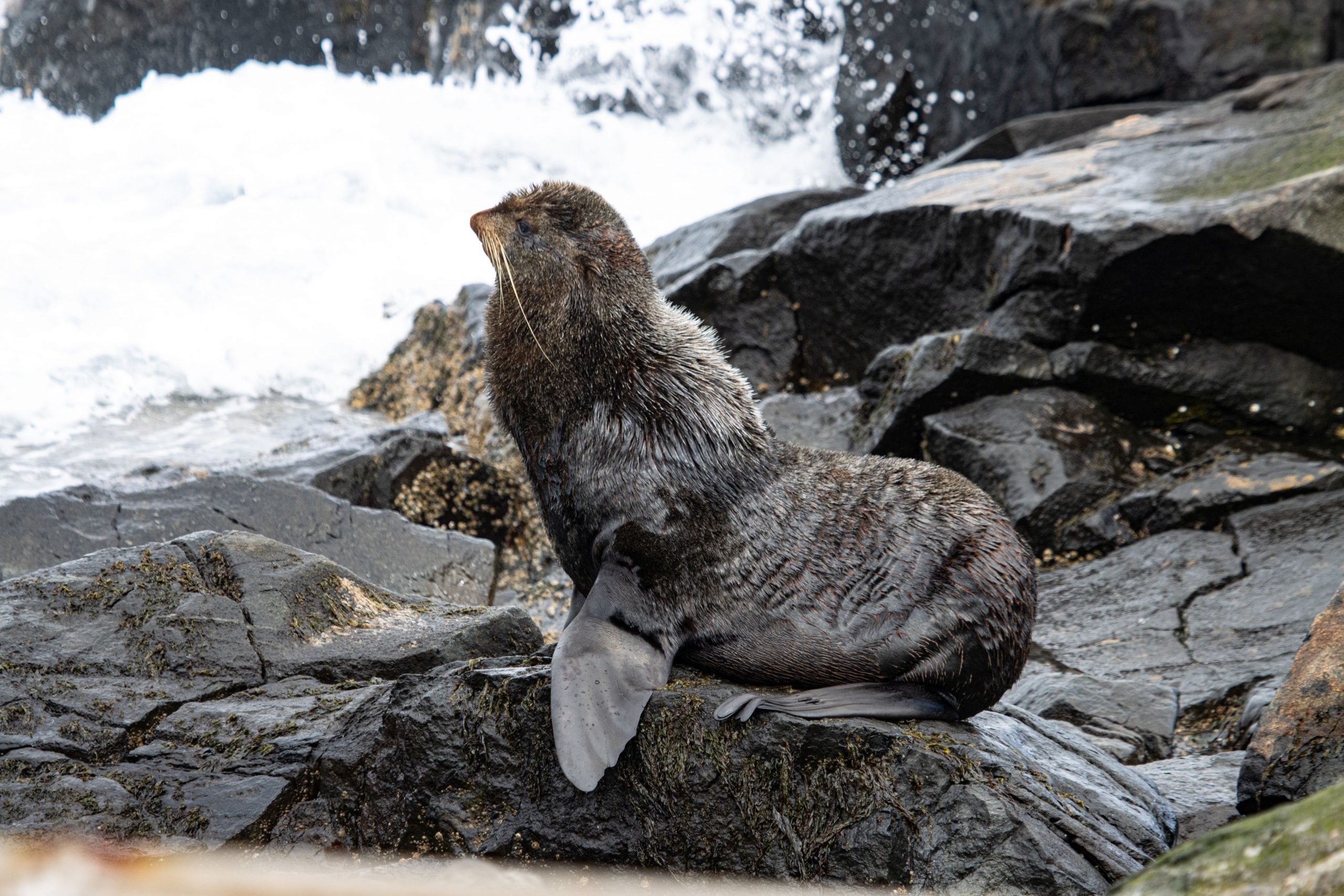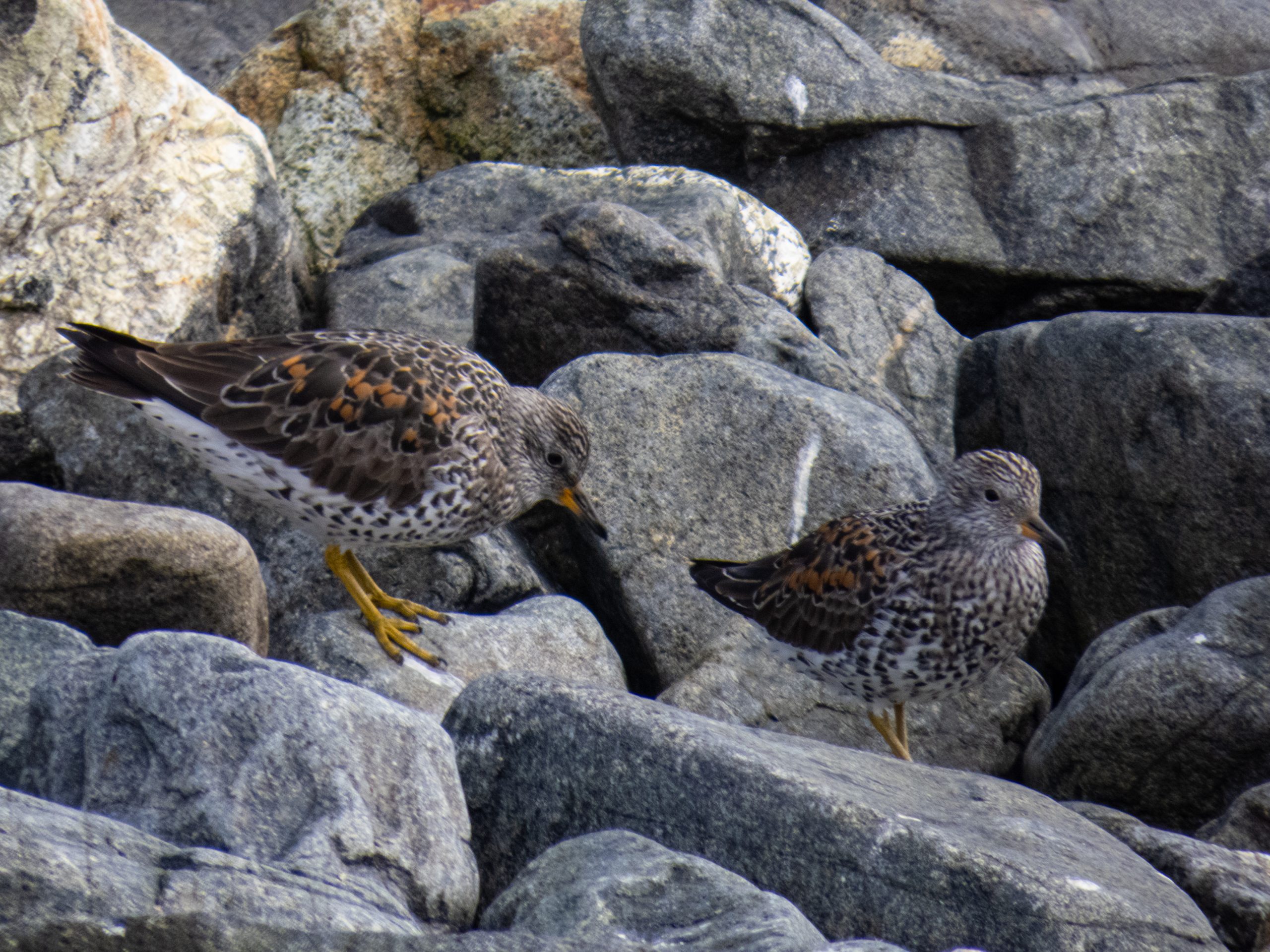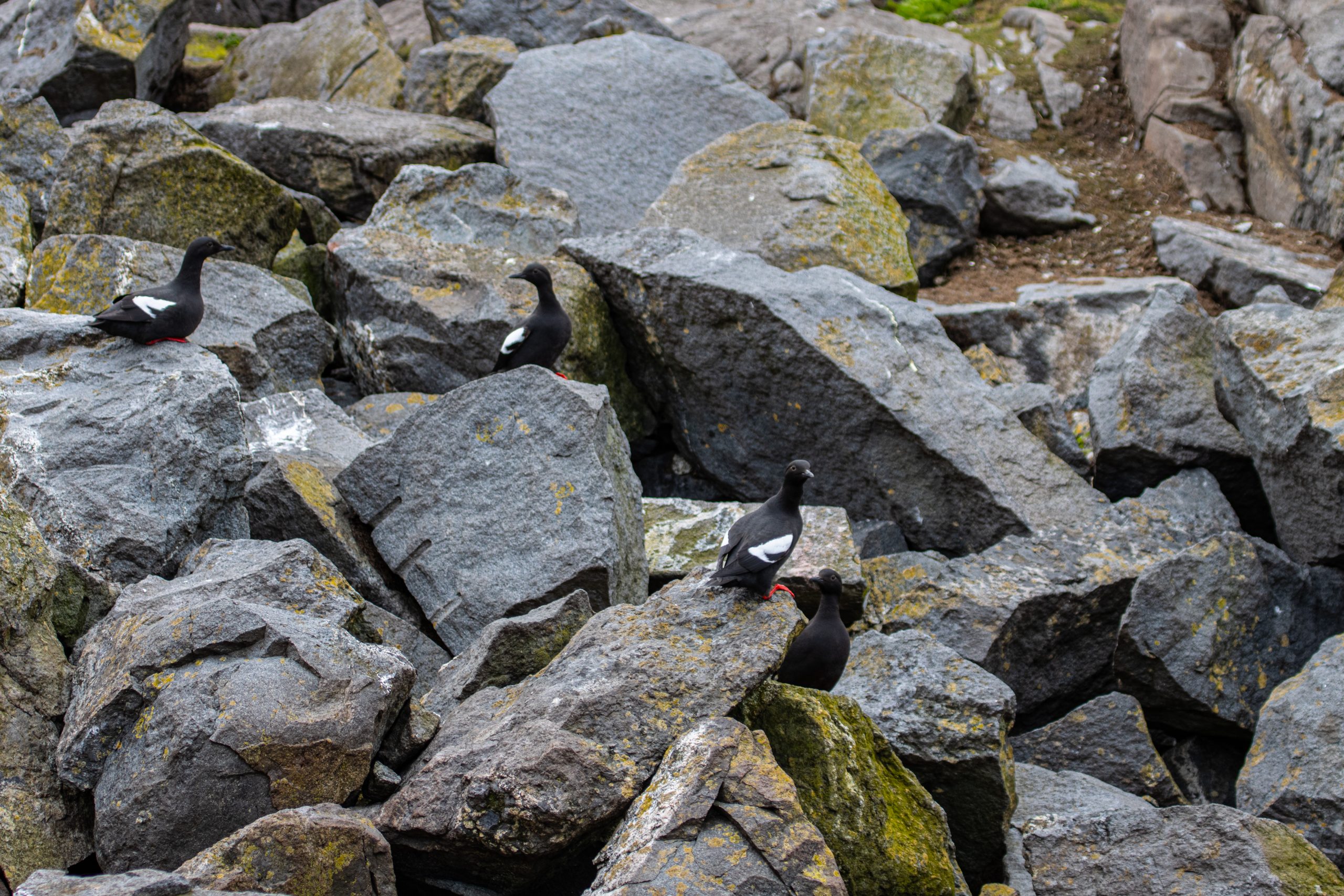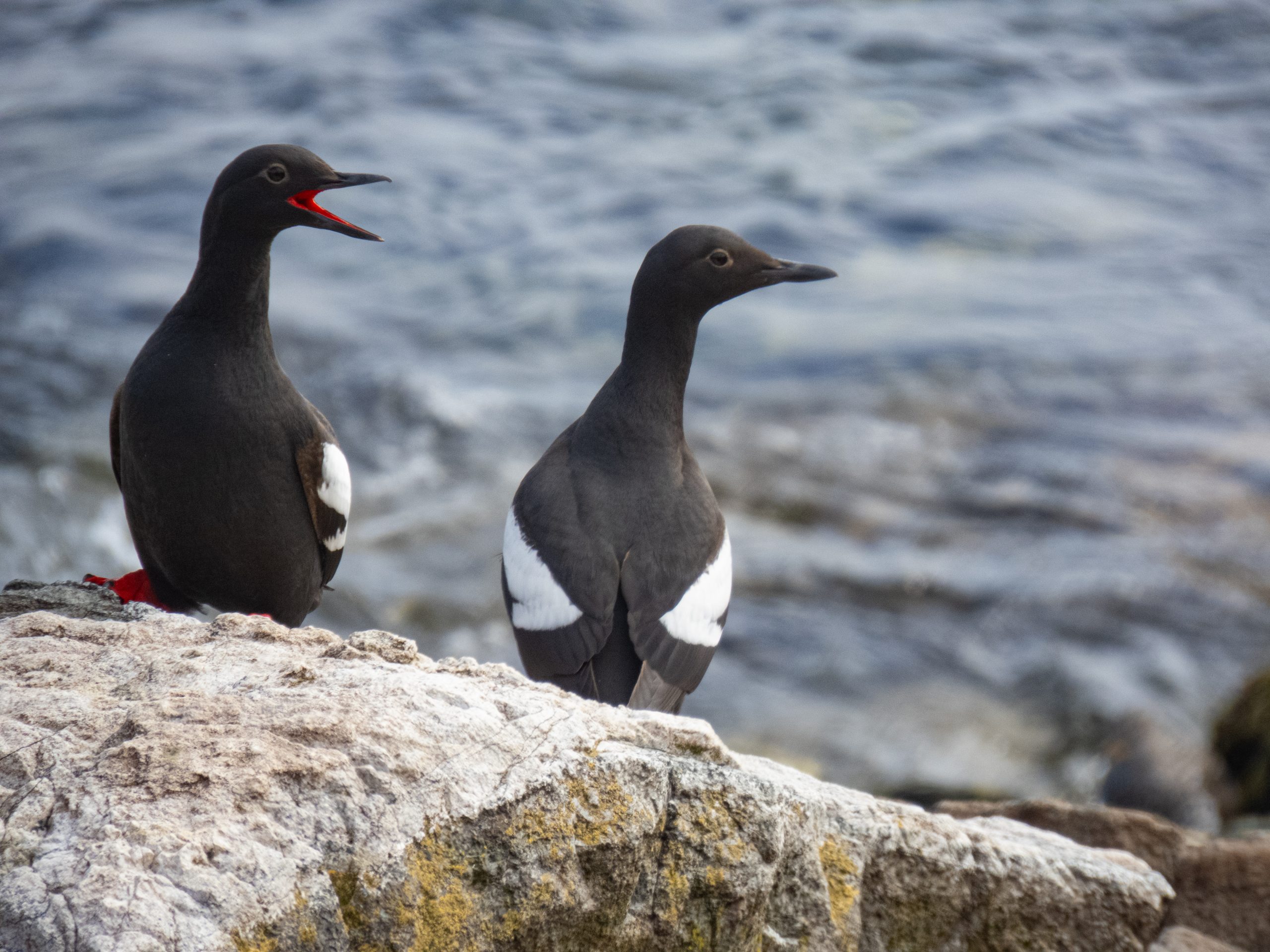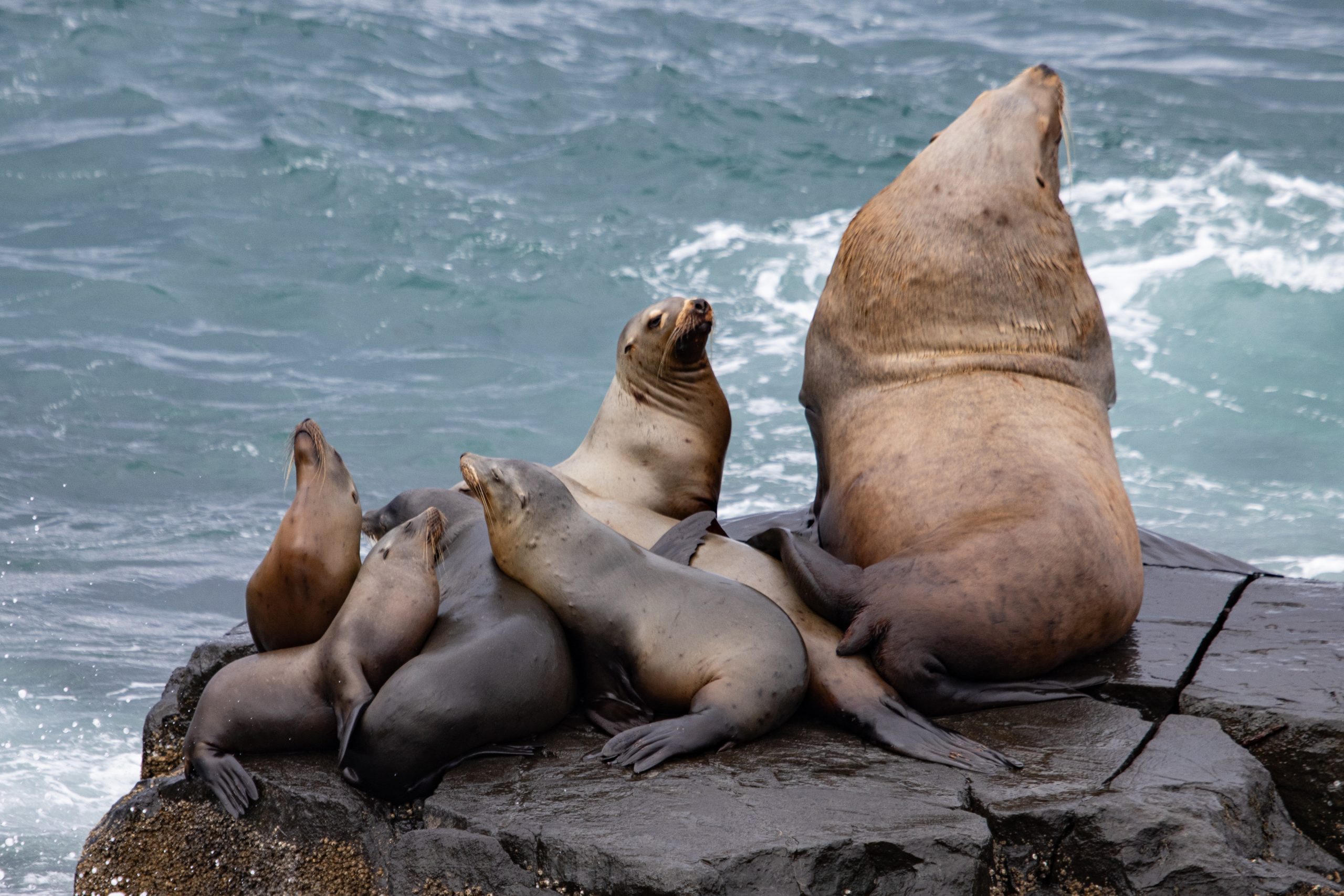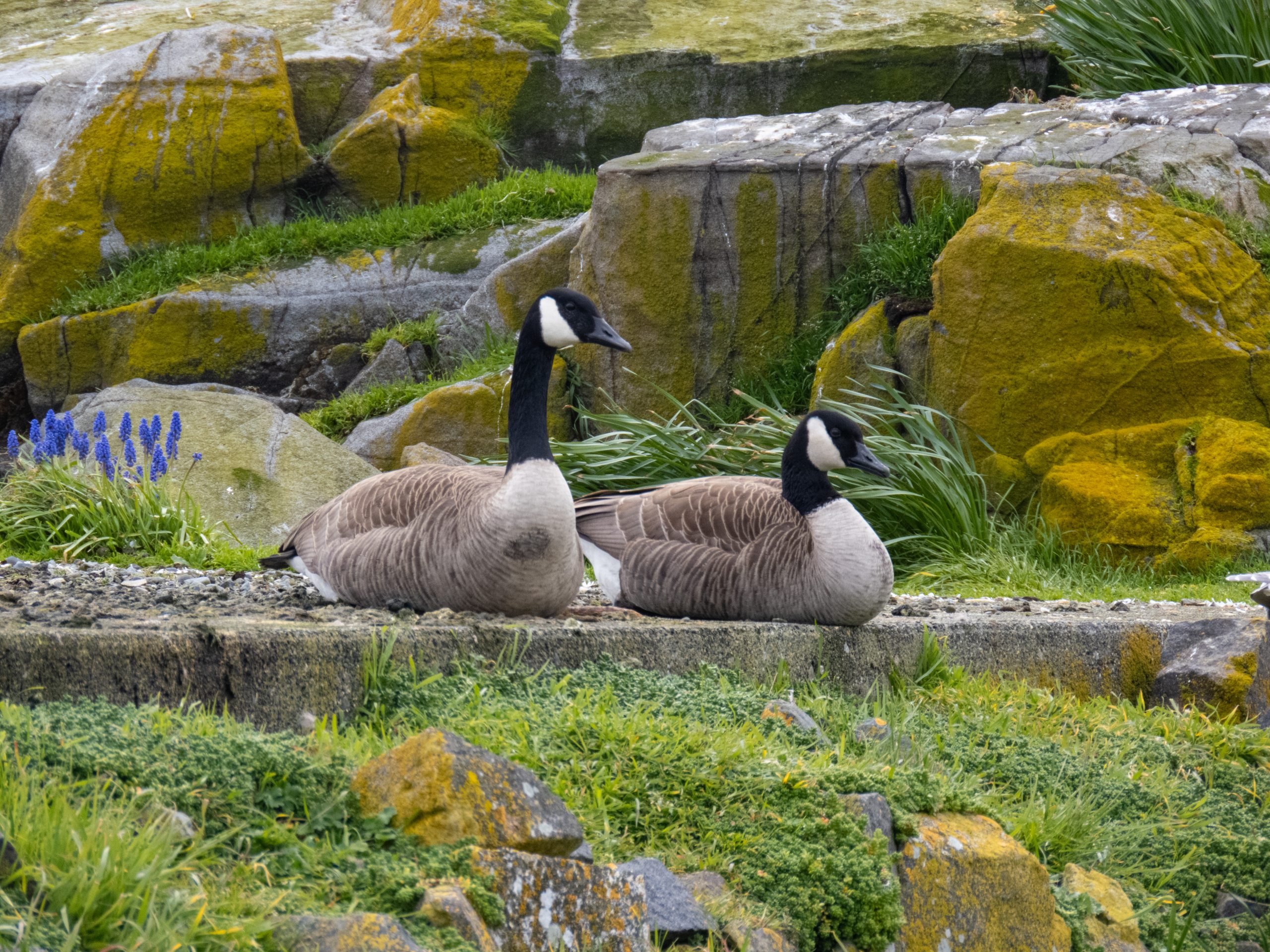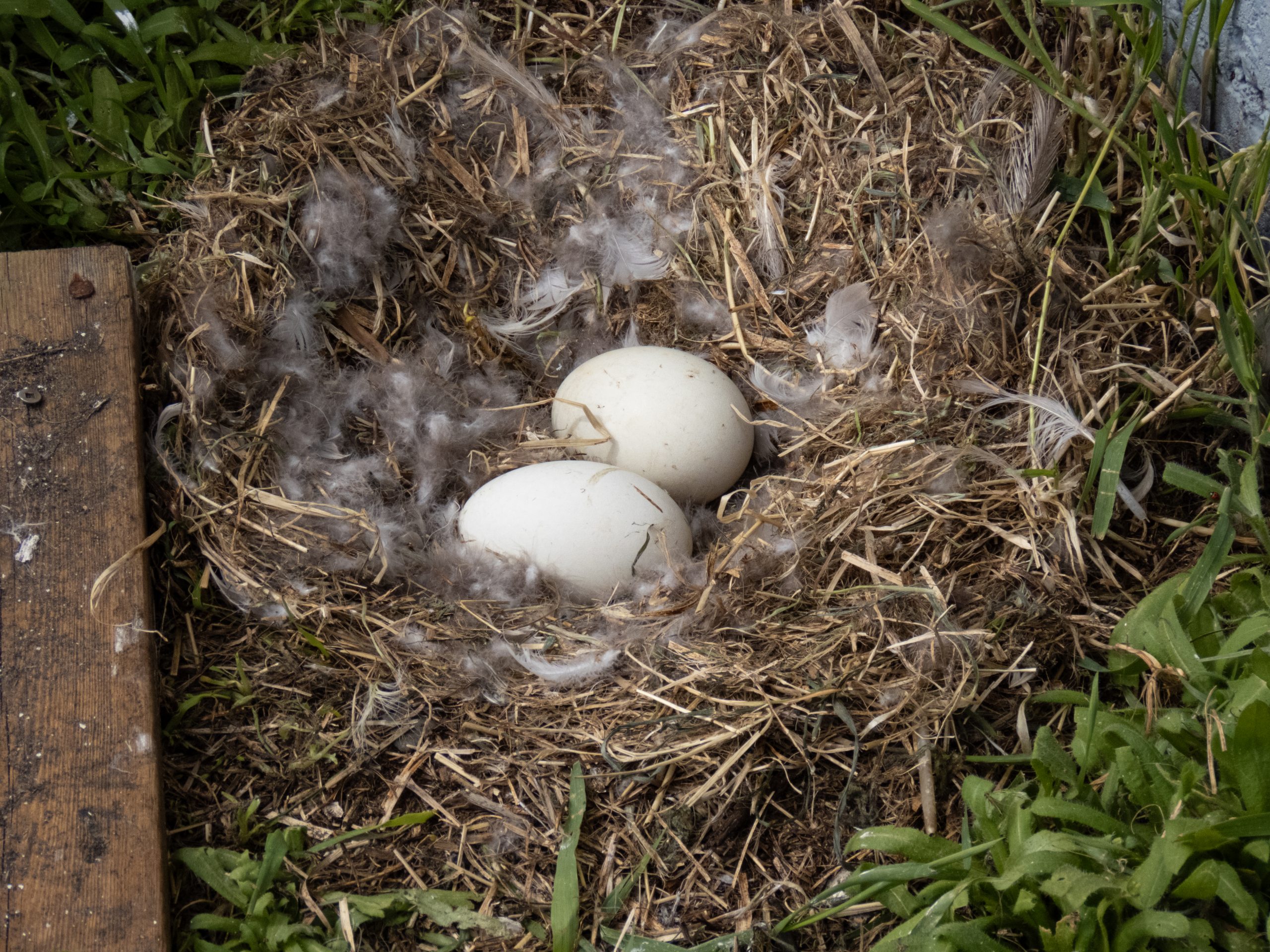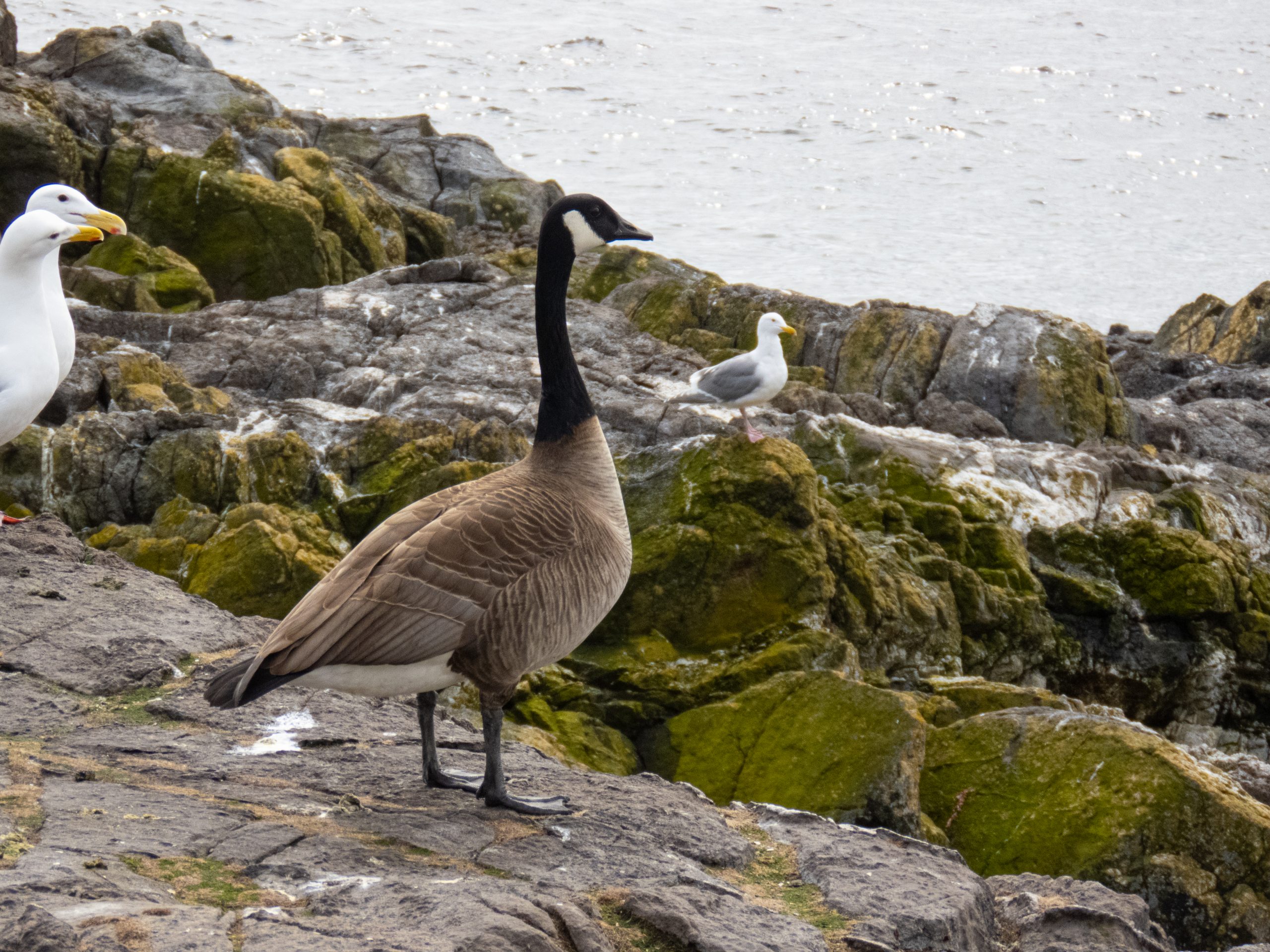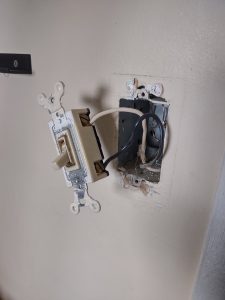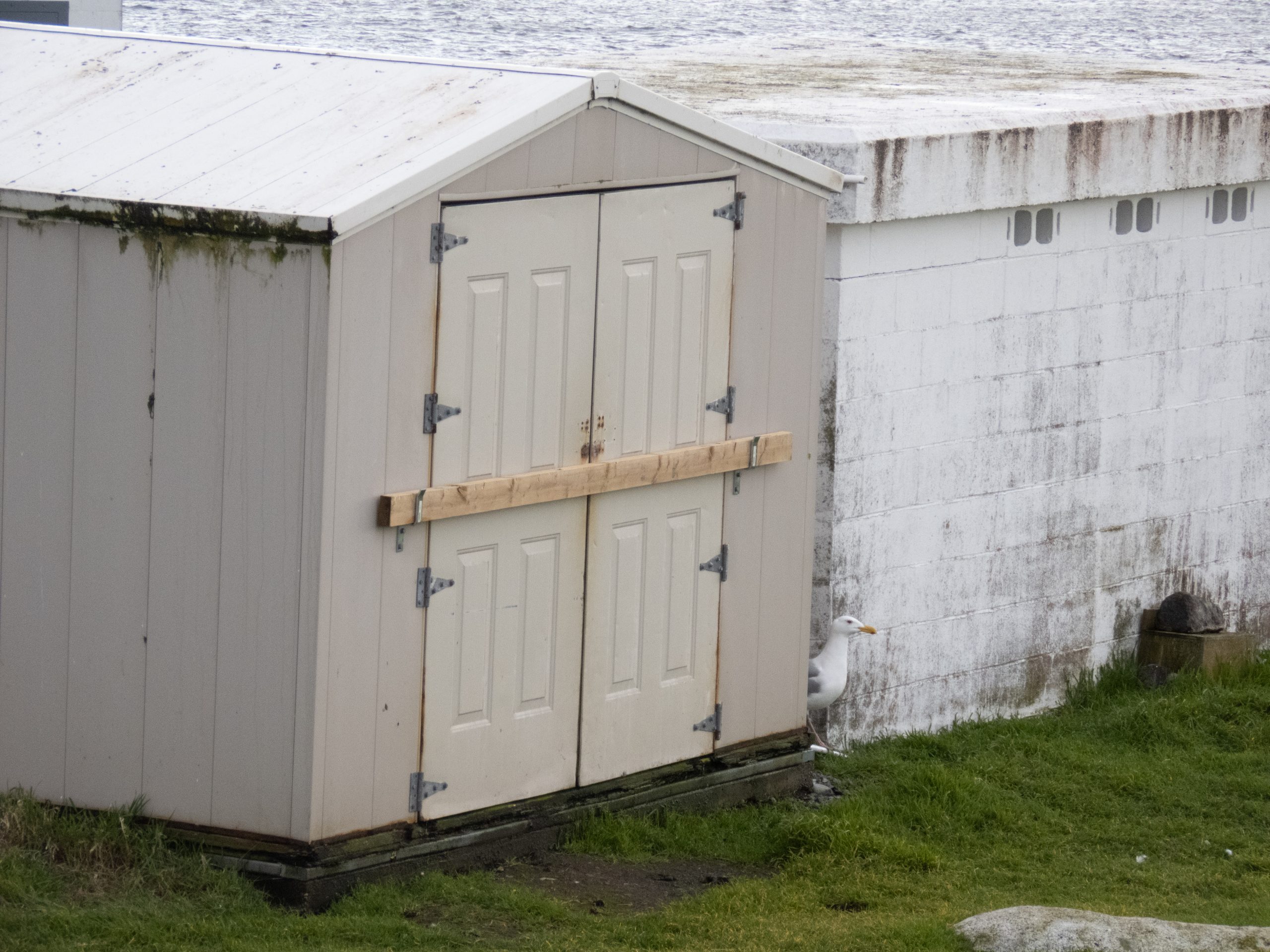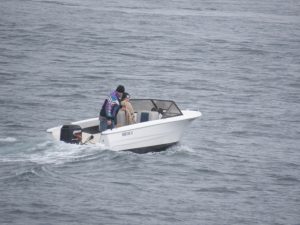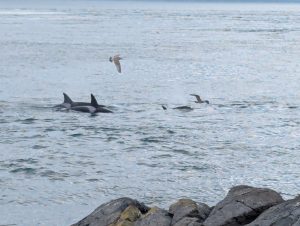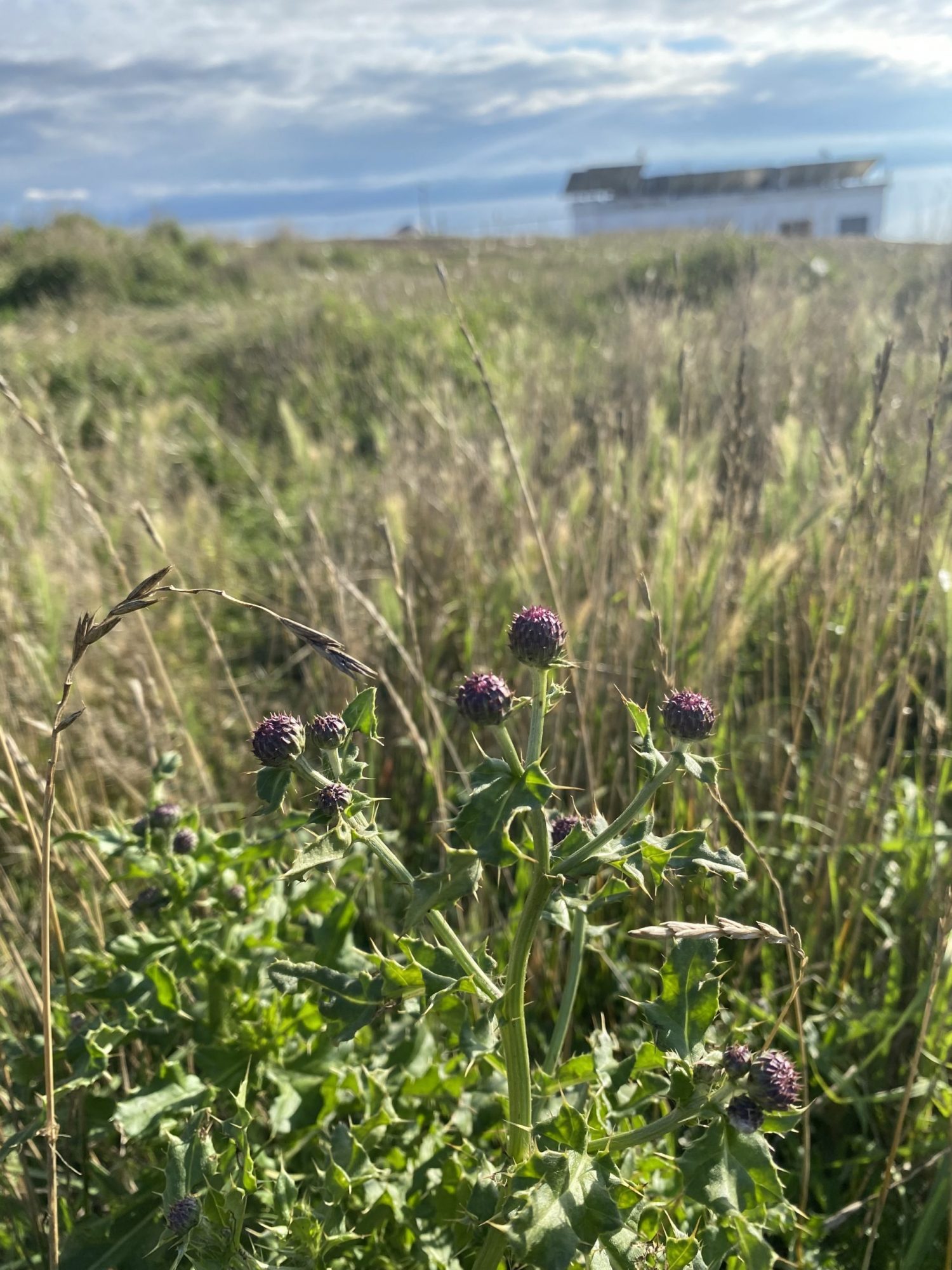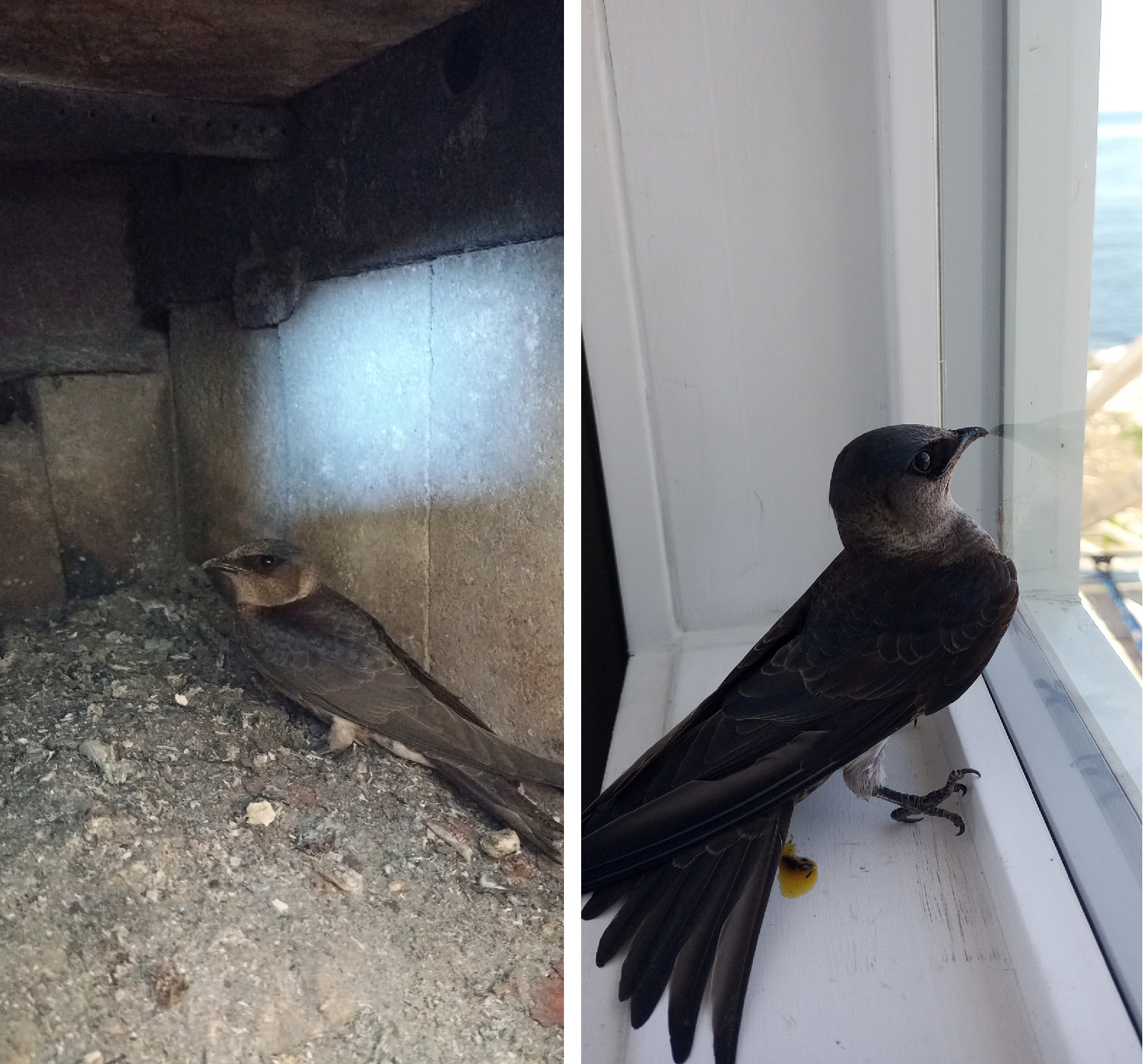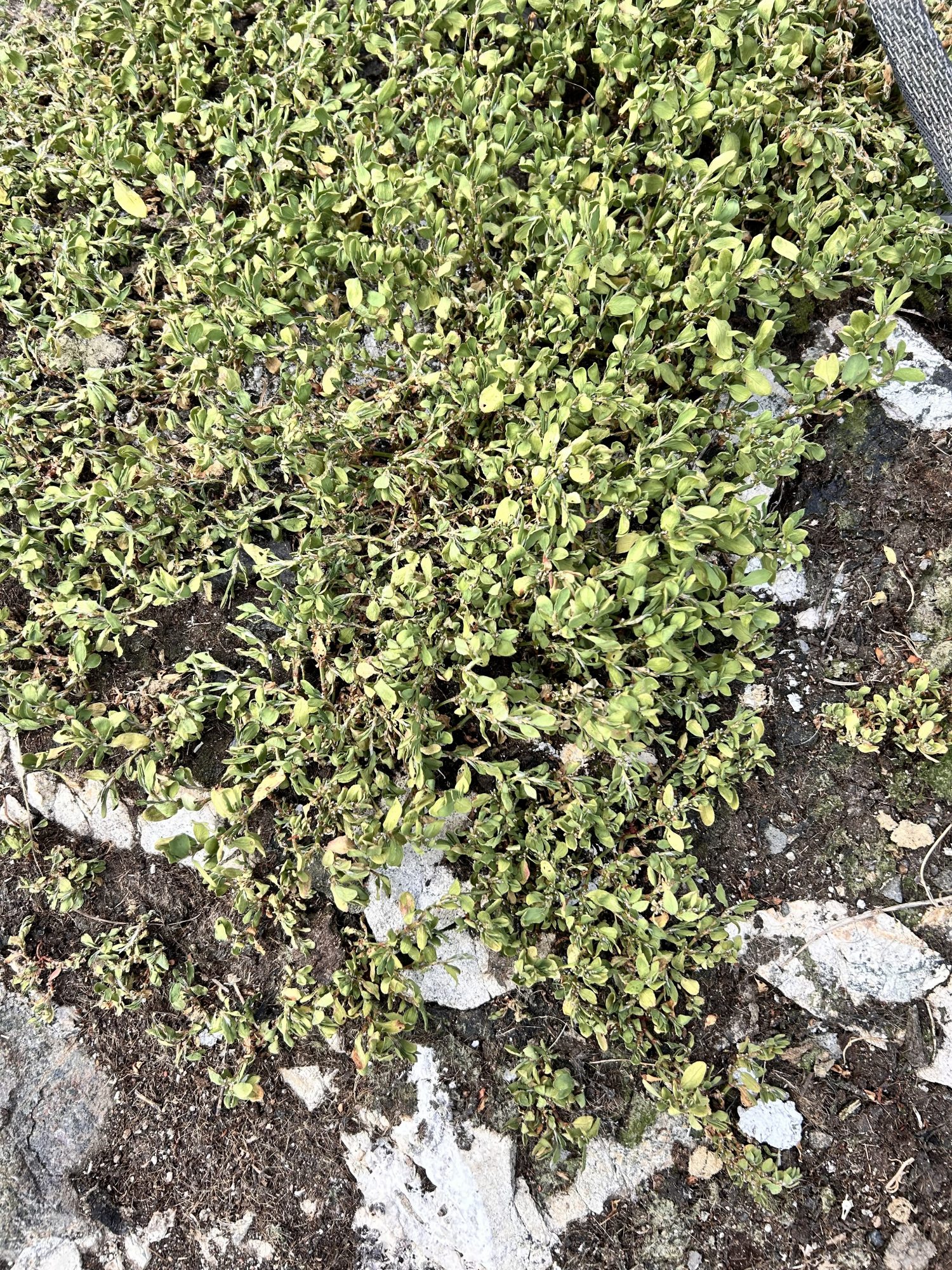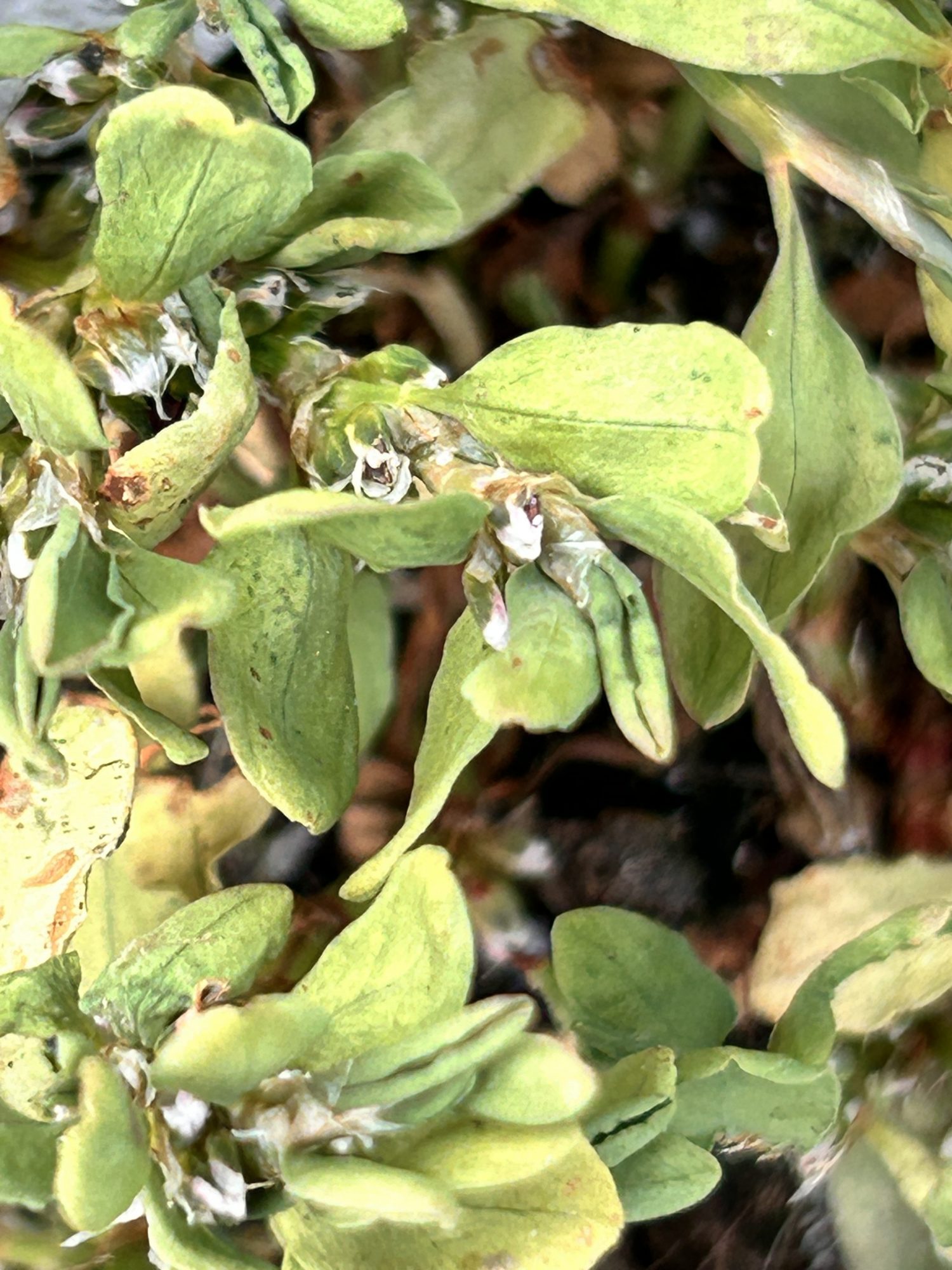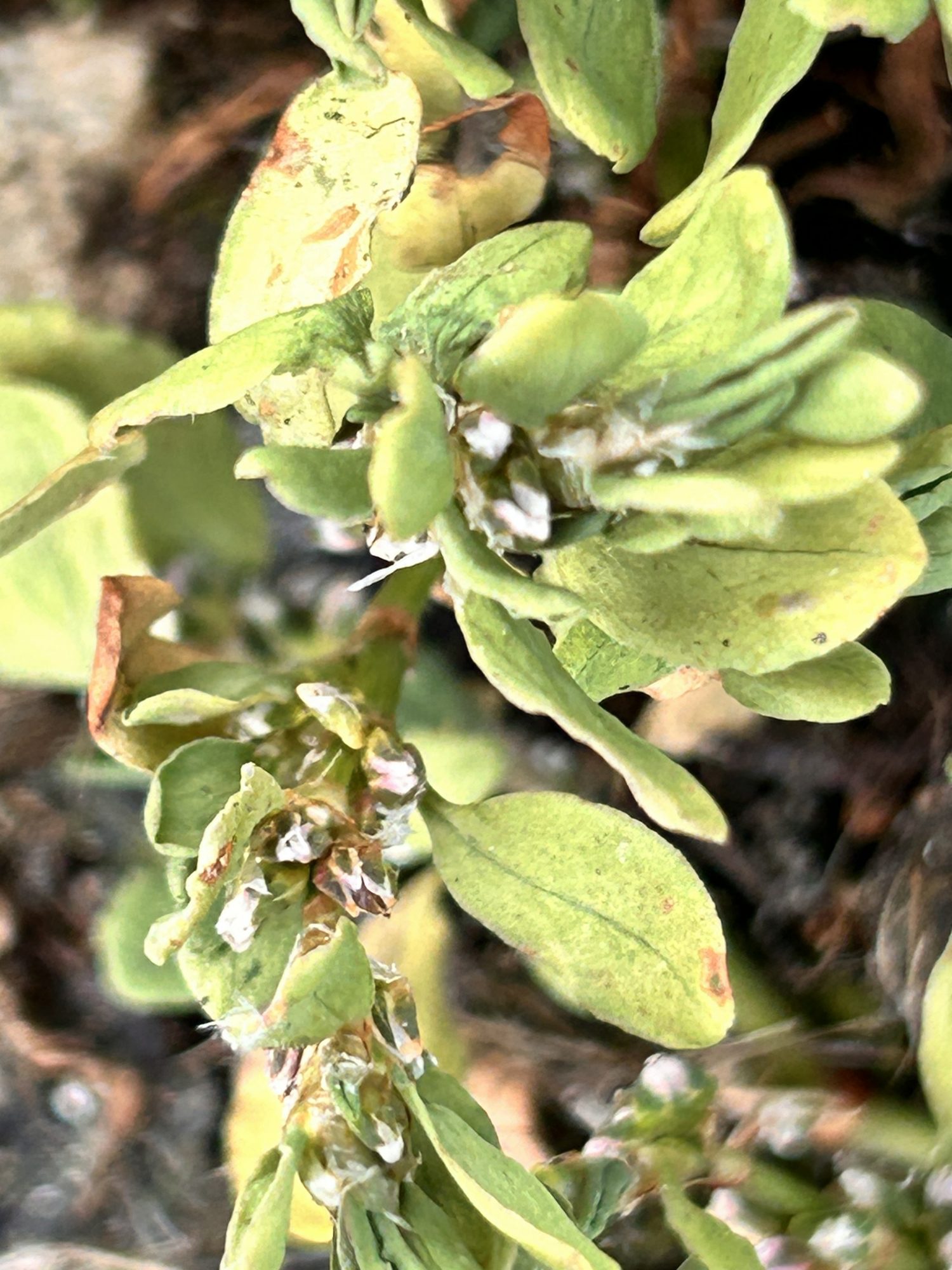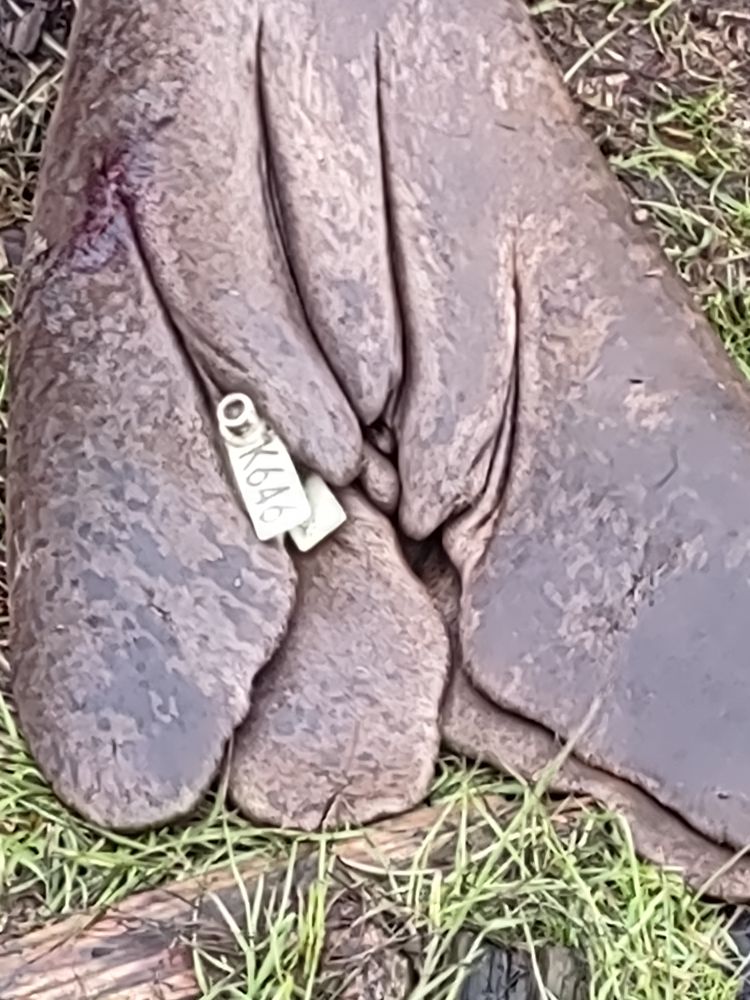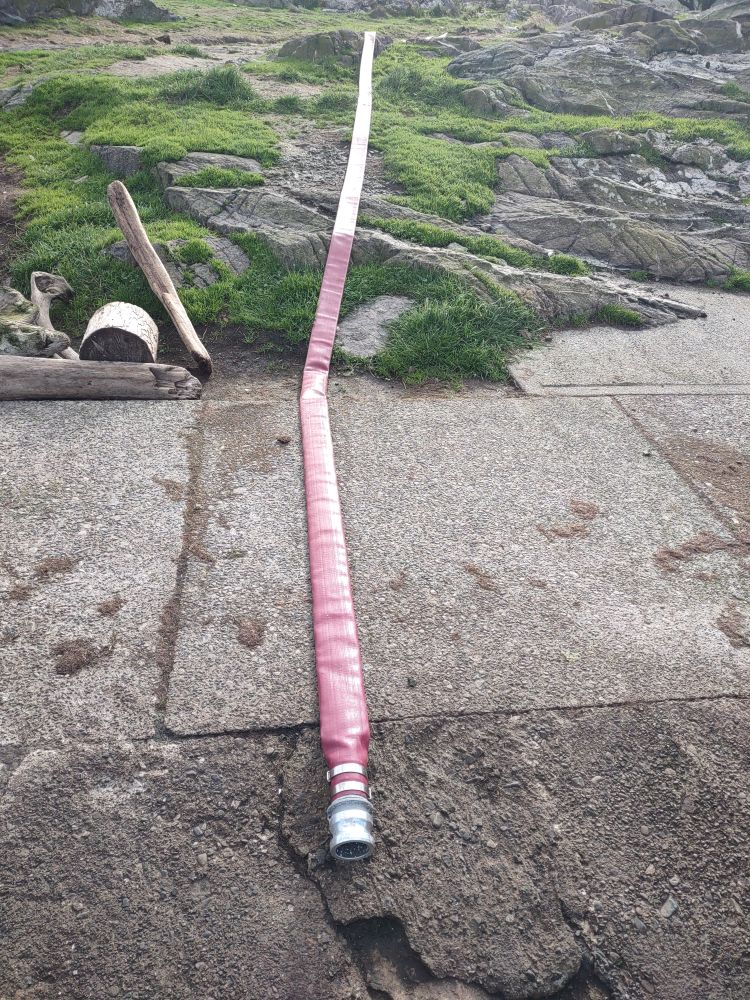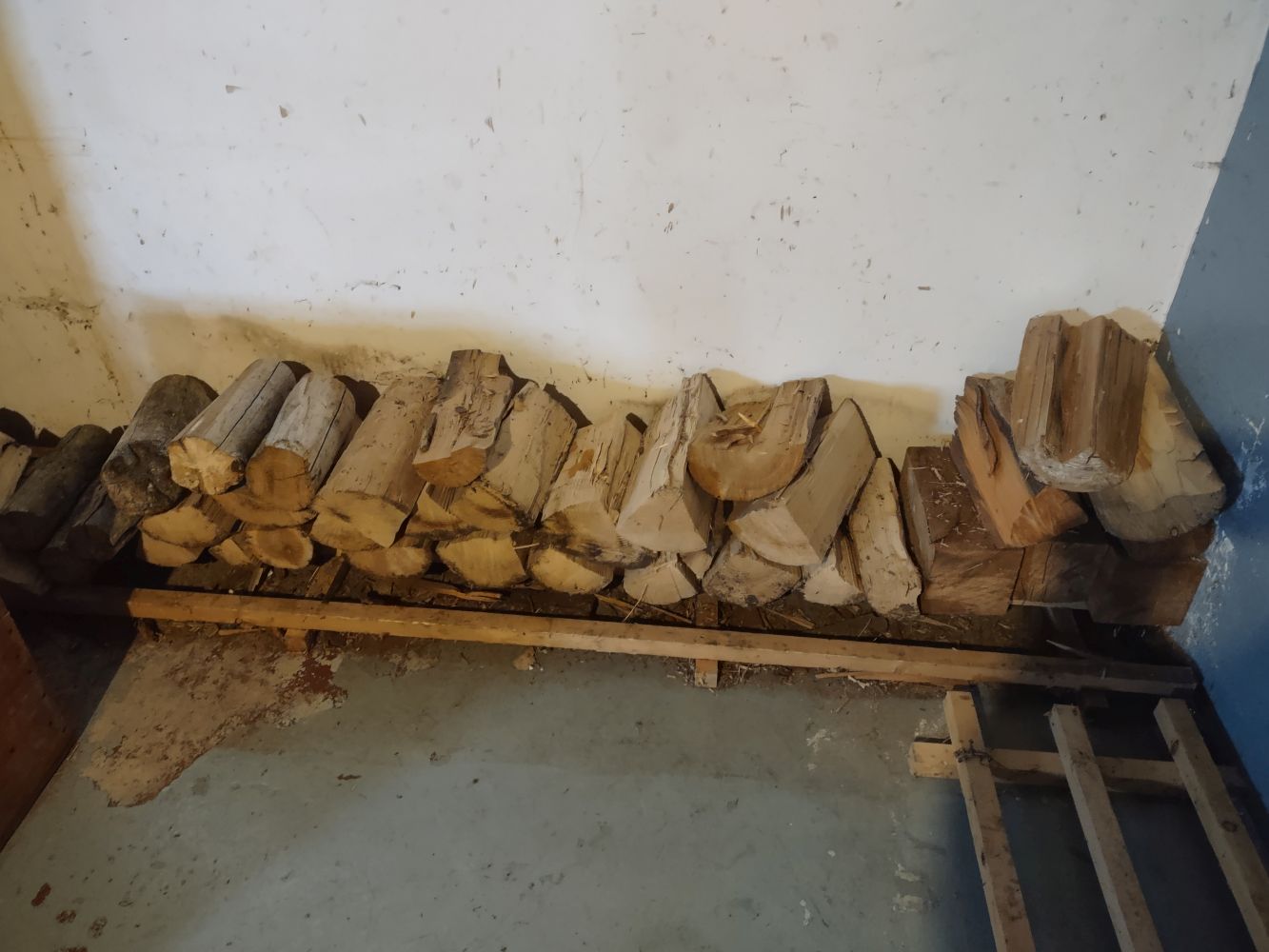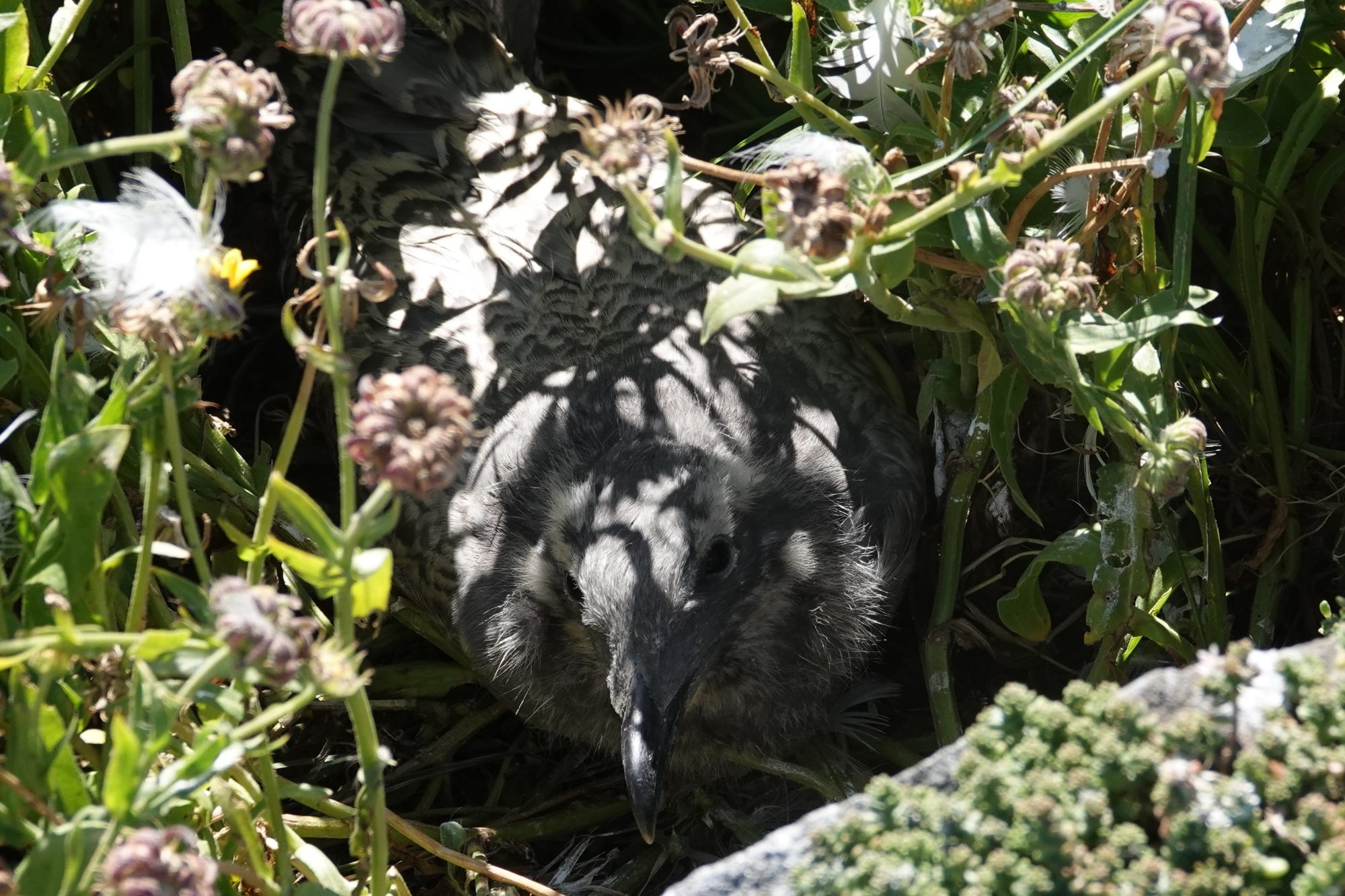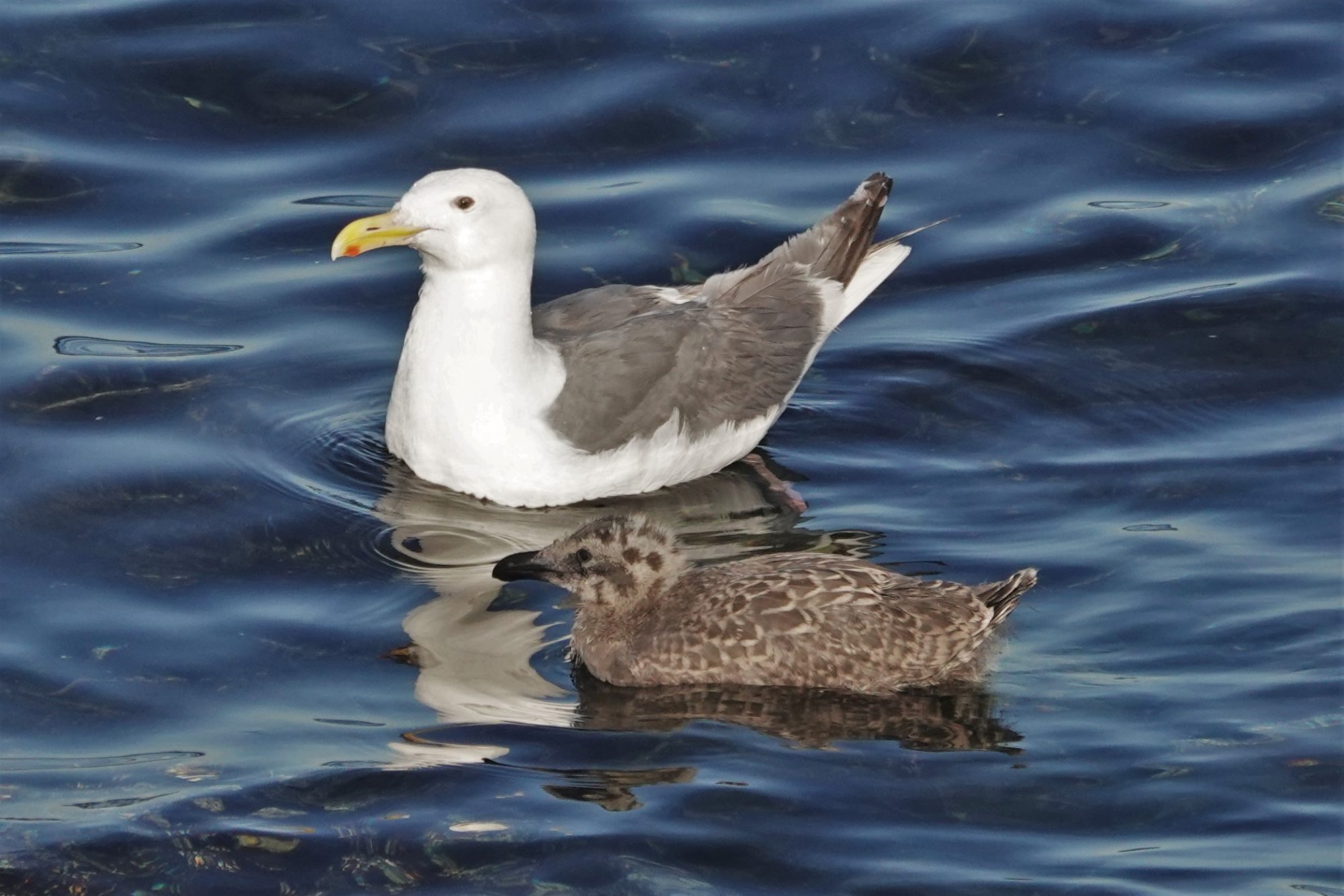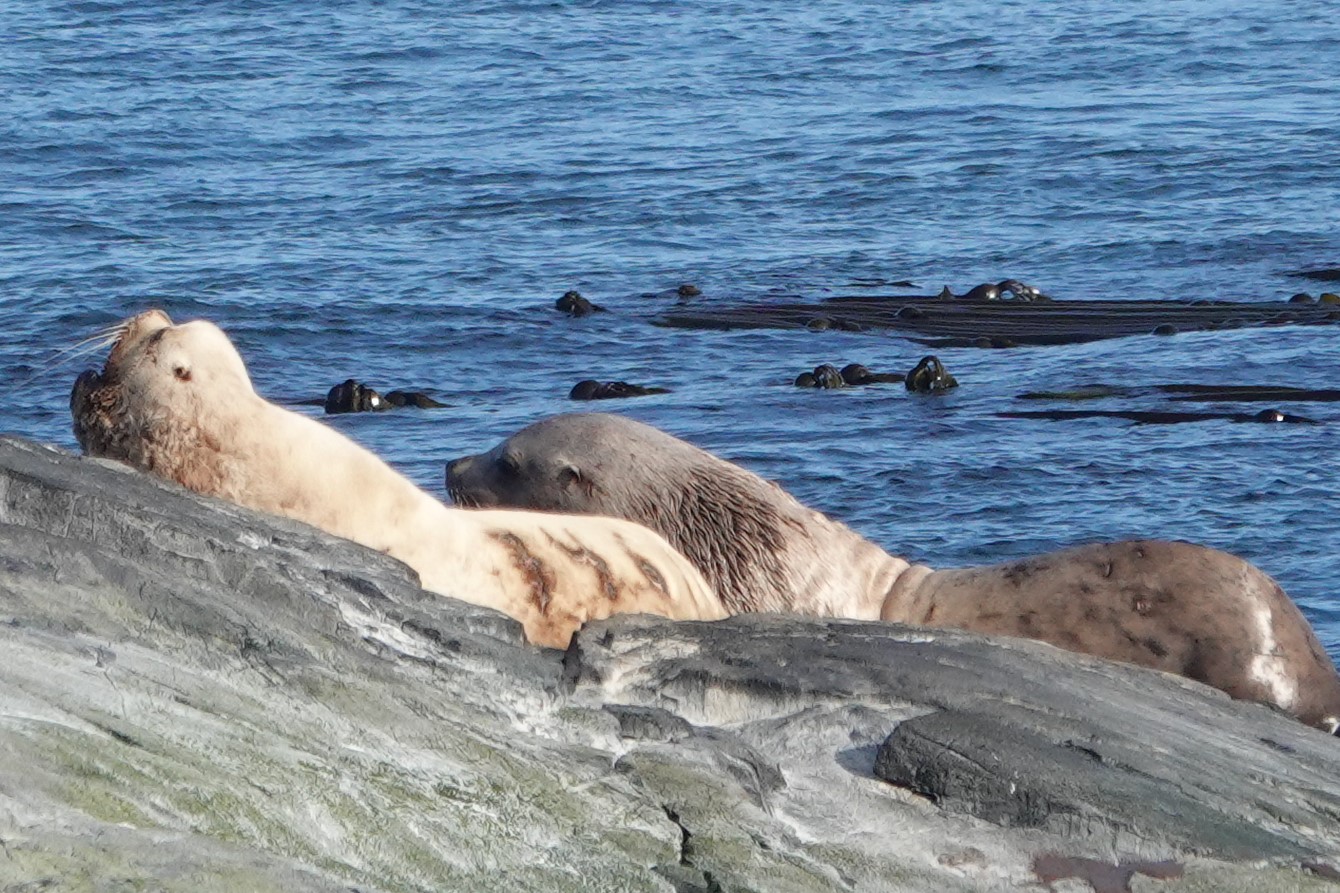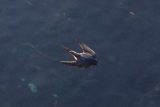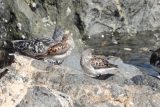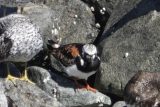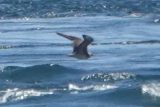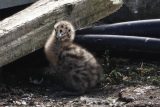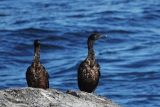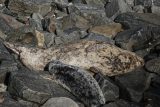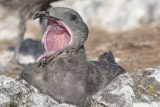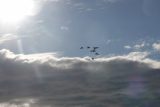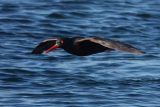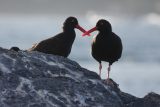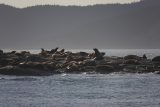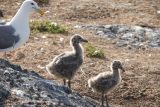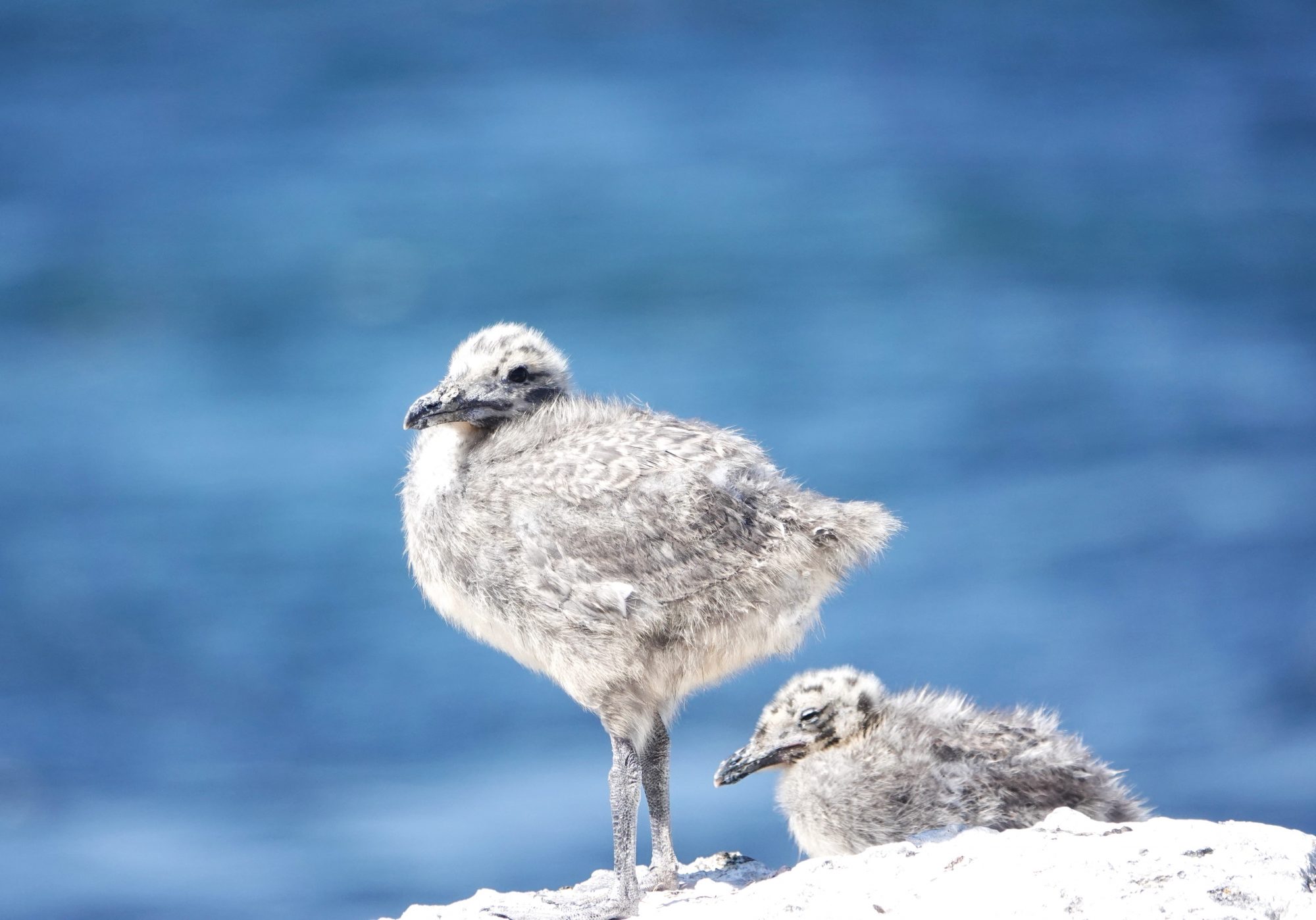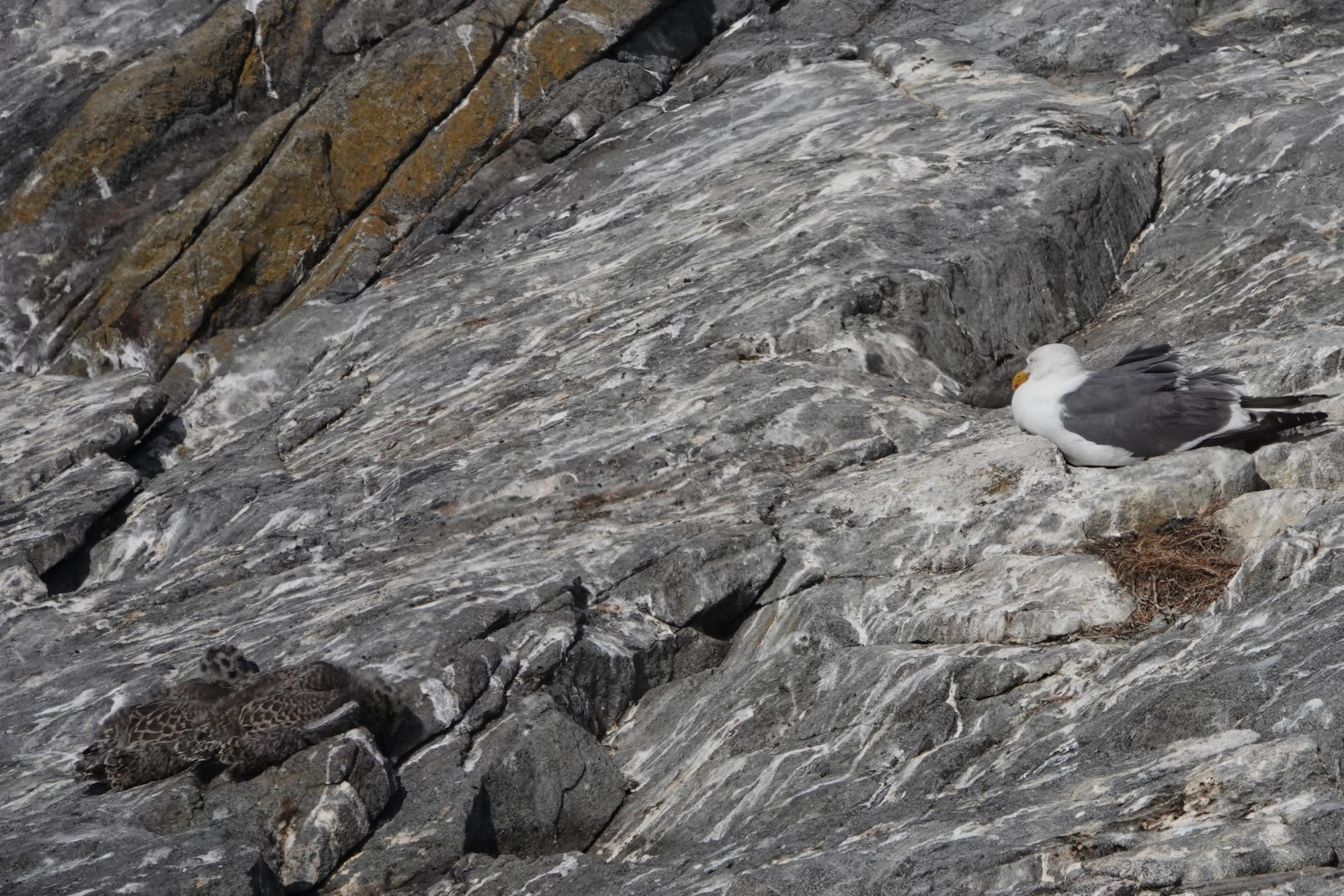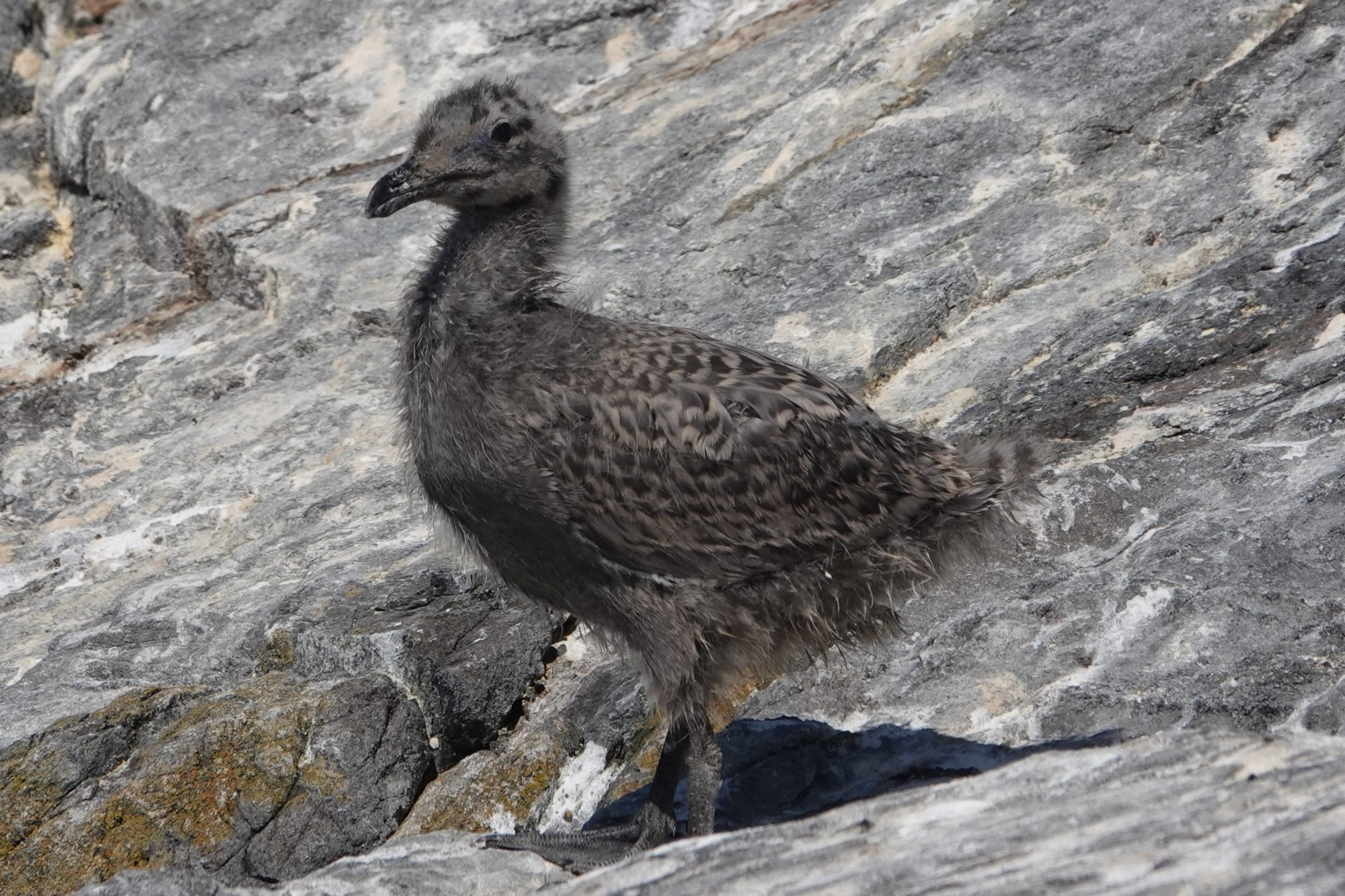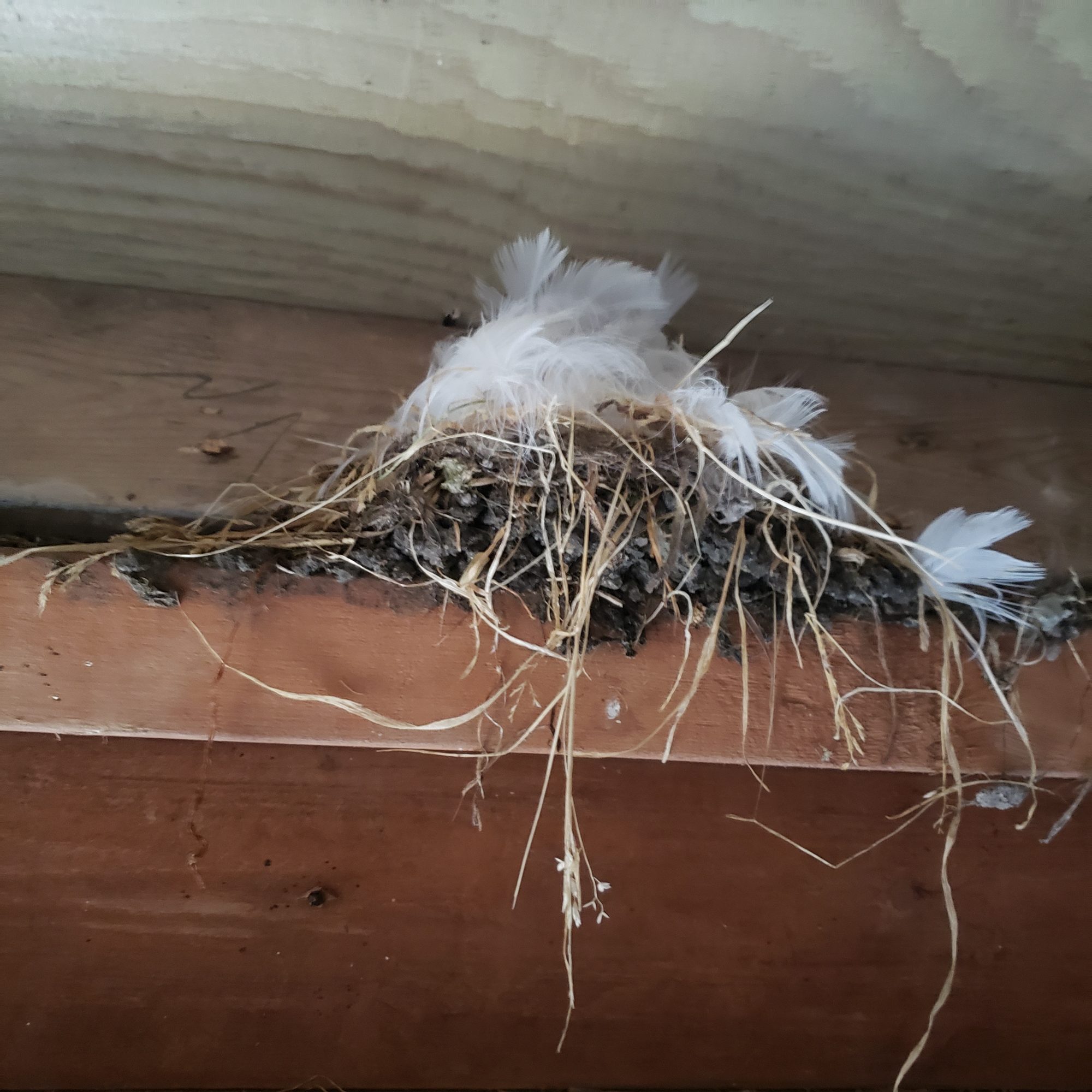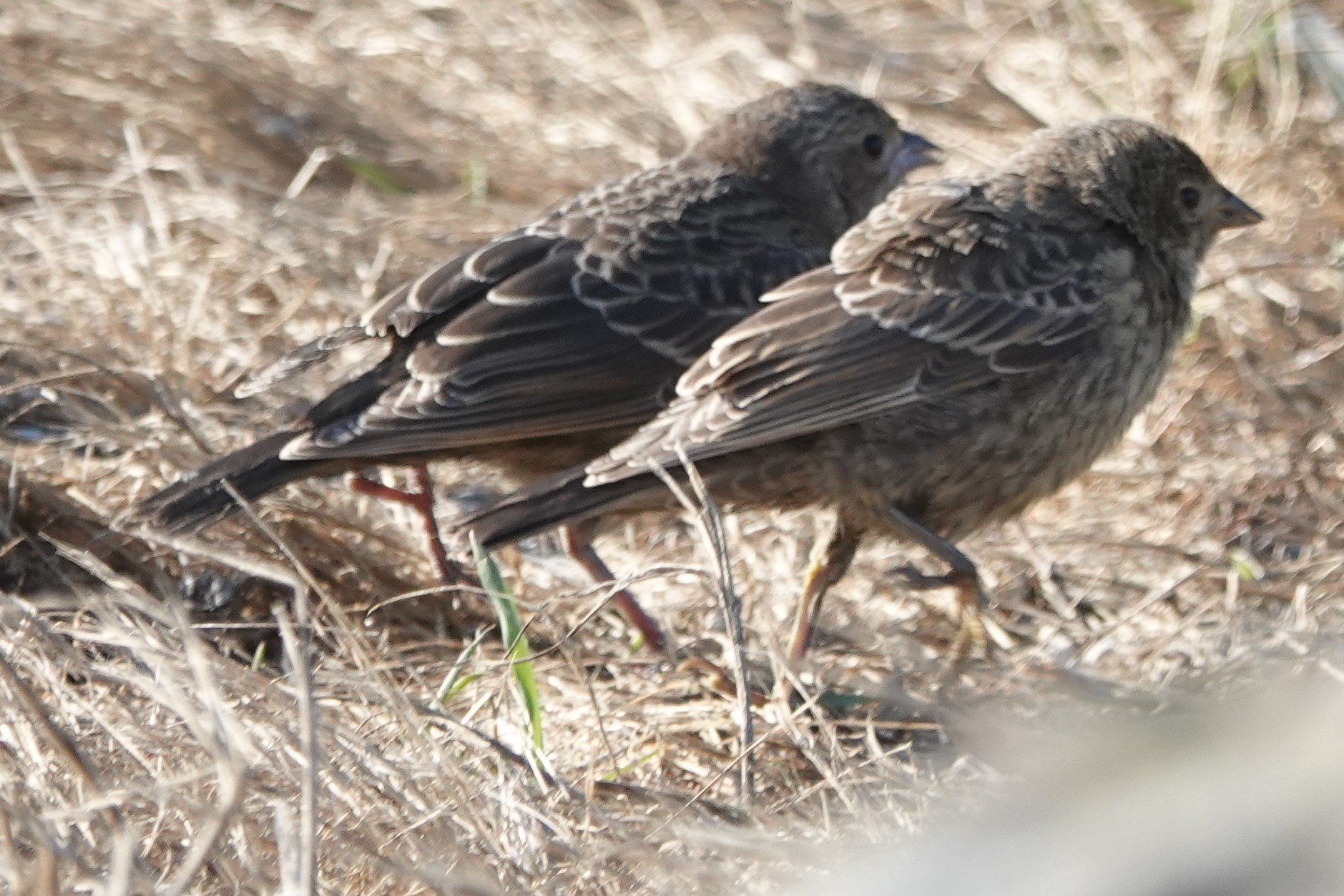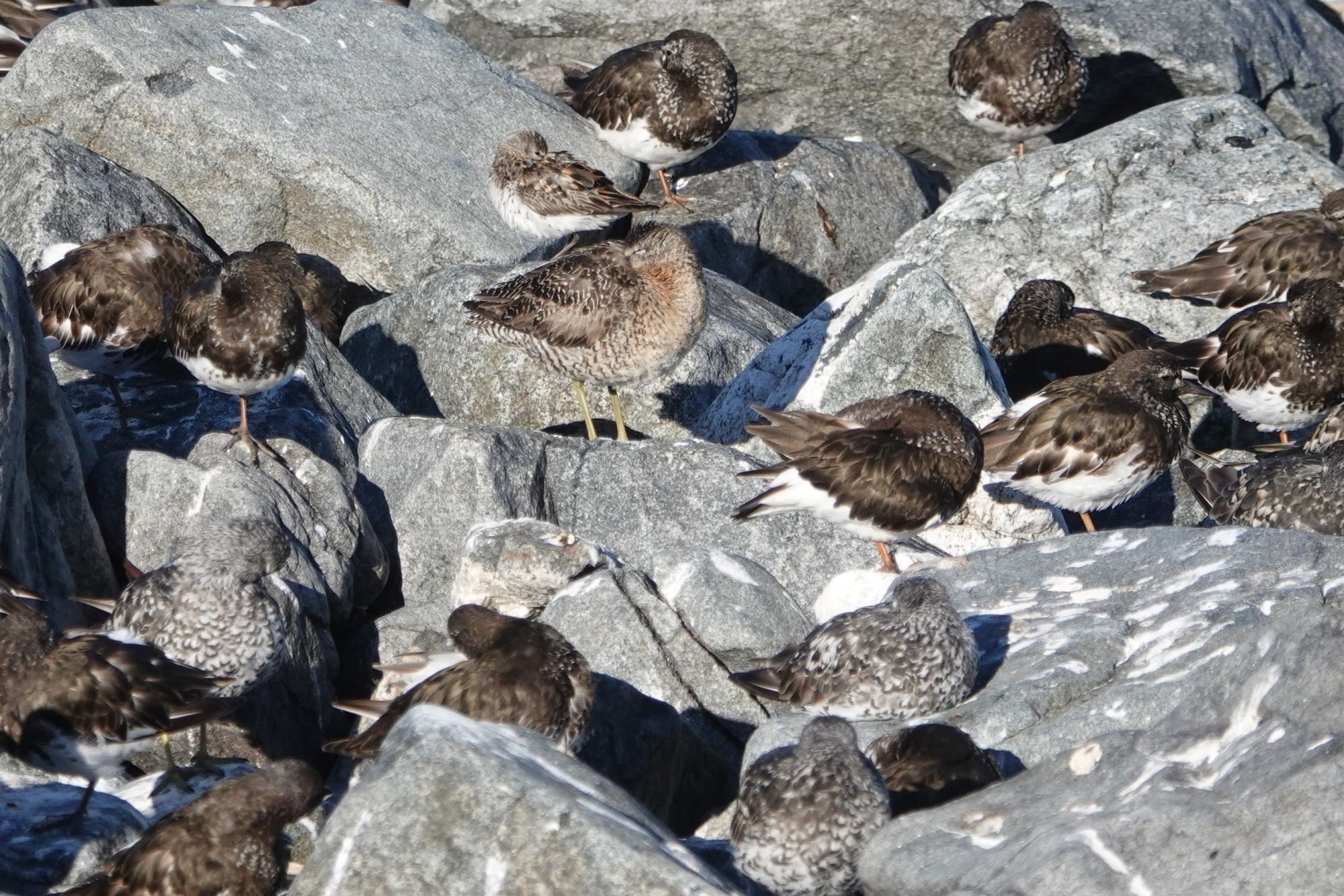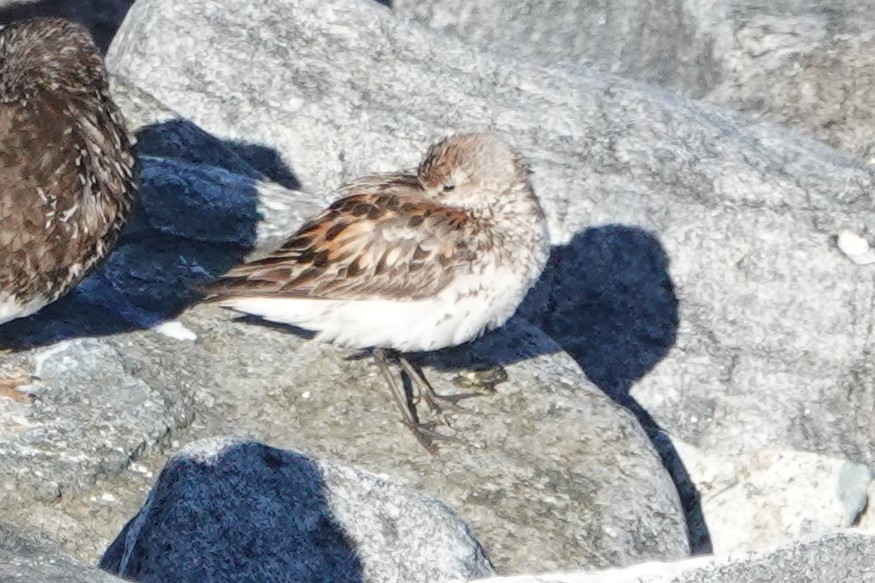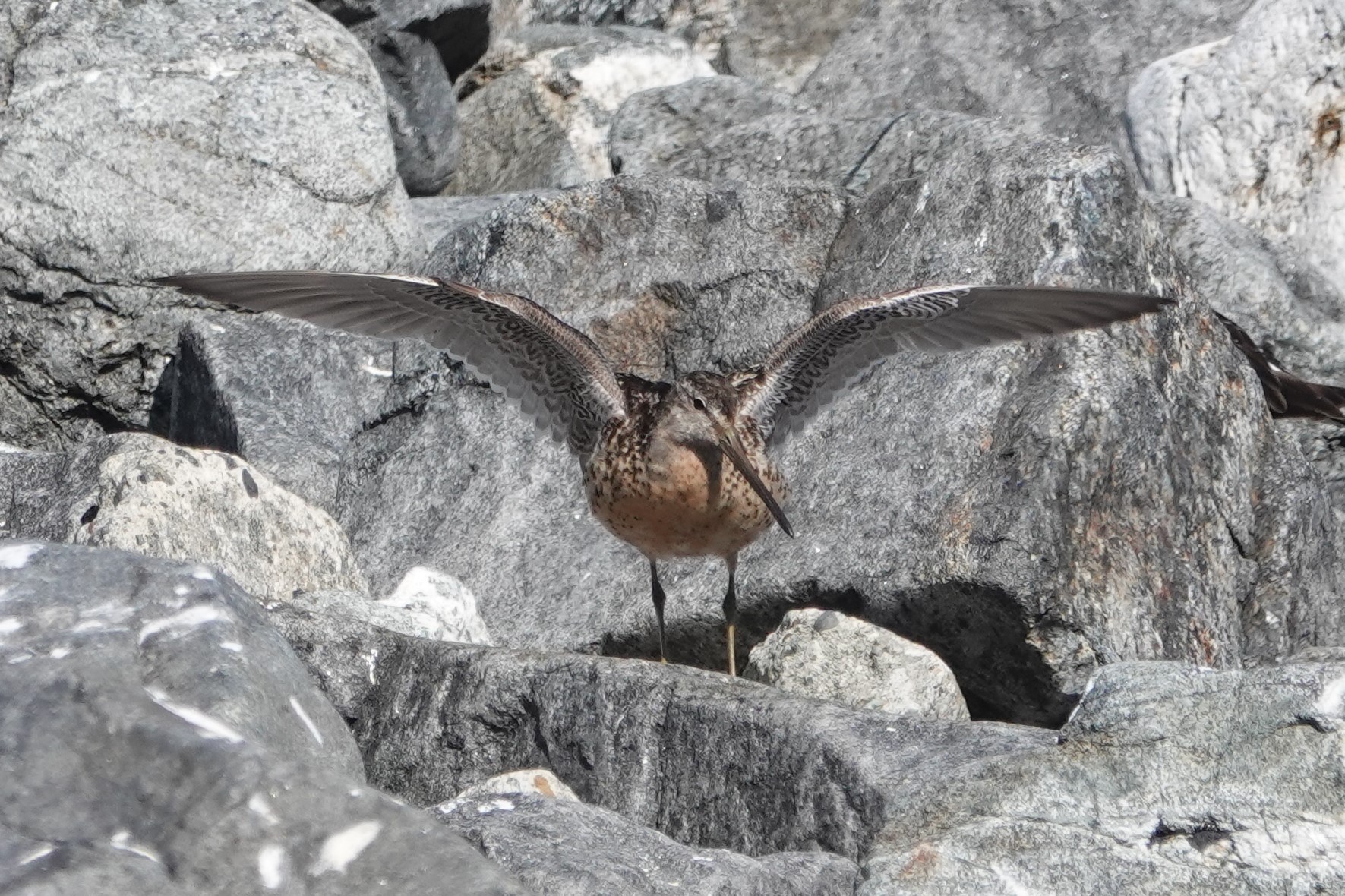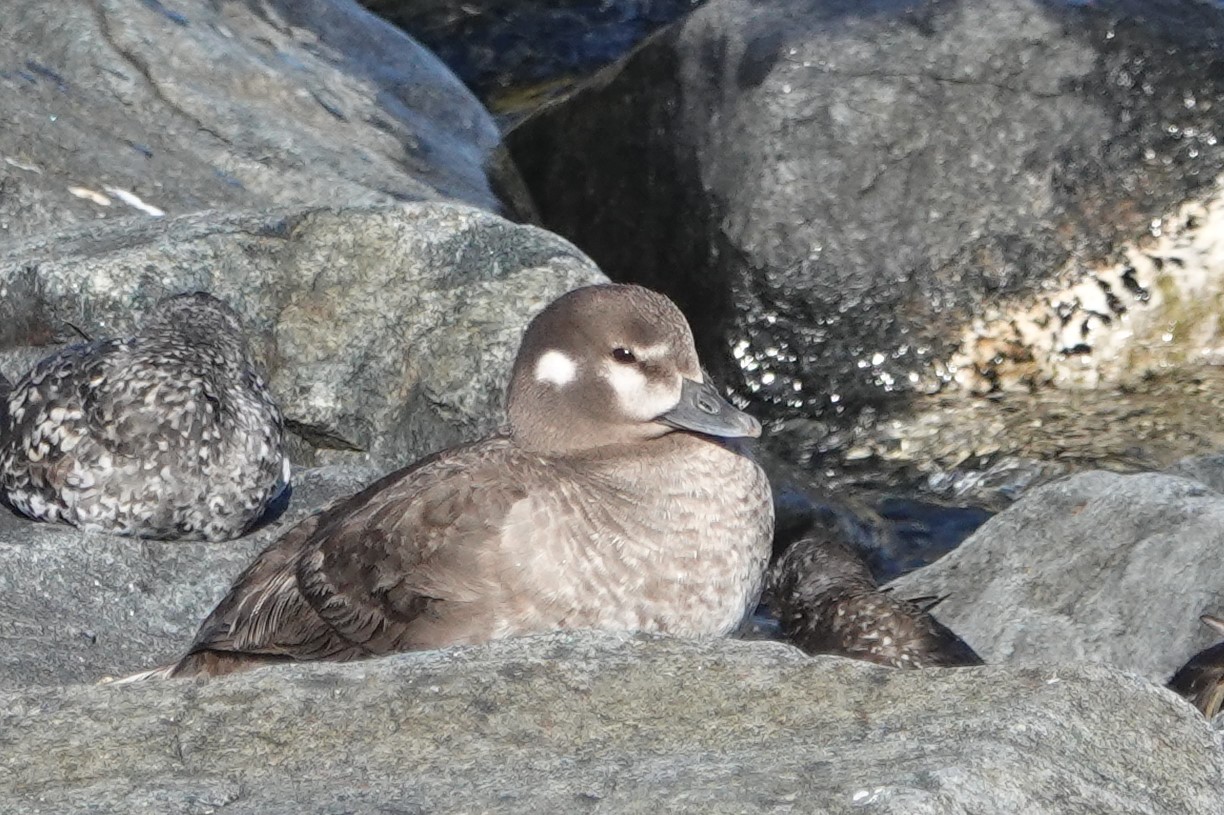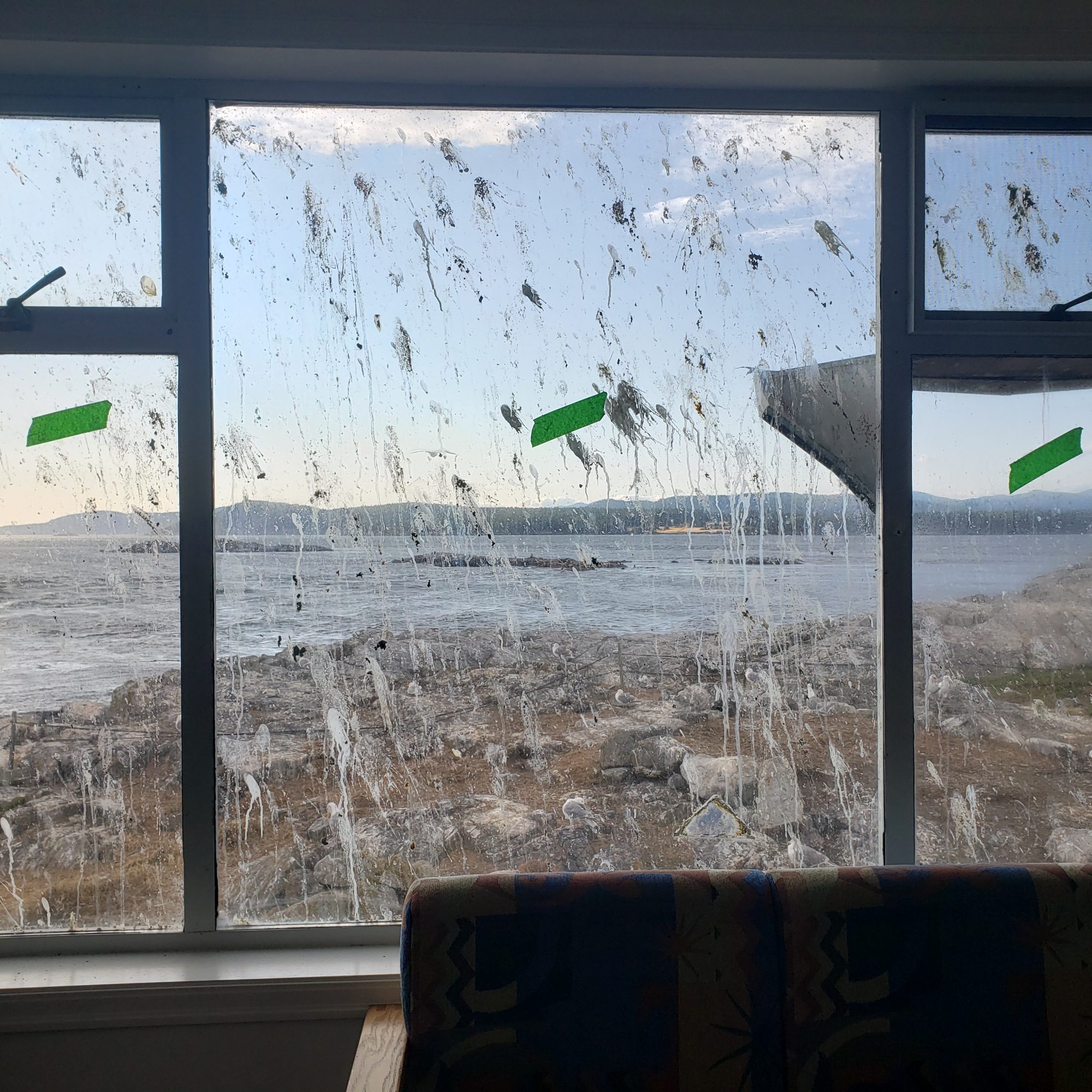| Race Rocks List (in AOU NACC order) |
iNaturalist list (link to gallery) |
| Order Anseriformes: geese and ducks: |
|
| Chen caerulescens (Lesser Snow goose) |
|
| Anser albifrons (Greater white-fronted Goose) |
Anser albifrons – 1 (Greater White-Fronted Goose) |
| Branta bernicla (Black Brant Goose): |
Branta bernicla – 1 (Black Brant) |
| Branta hutchinsii (Cackling Goose): |
Branta hutchinsii – 1 (Cackling Goose) |
| Branta canadensi (Canada Goose): |
Branta Canadensis – 18 (Canada Goose) |
| Anas platyrhynchos (Mallard): |
Anas platyrhynchos – 1 (Mallard) |
| Anas carolinensis (Green-winged Teal): |
Anas crecca carolinensis – 1 (American Green-winged Teal) |
| Histrionicus histrionicus (Harlequin duck) |
Histrionicus histrionicus – 8 (Harlequin Duck) |
| Melanitta perspicillata ( surf scoter) |
Melanitta perspicillata – 1 (Surf Scoter) |
| Bucephala albeola (Bufflehead) |
Bucephala albeola – 1 (Bufflehead) |
| Mergus merganser (Common merganser) |
Mergus merganser – 1 (Common Merganser) |
| Order Podicipediformes: grebes: |
|
| Aechmophorus occidentalis (Western Grebe): |
Aechmophorus occidentalis – 1 (Western Grebe) |
| Order Columbiformes: doves: |
|
| Columba livia (Rock Dove): |
Columba livia domestica (Feral Pigeon) |
| Order Charadriiformes: other shore&seabirds |
|
| Haematopus bachmani (Black oystercatcher): |
Haematopus bachmani – 19 (Black Oystercatcher) |
| Pluvialis squatarola (Black-bellied Plover): |
Pluvialis squatarola – 1 (Black-bellied Plover) |
| Pluvialis dominica (American Golden Plover): |
Pluvialis dominica – 1 (American Golden-Plover) |
| Charadrius vociferus (Kildeer): |
Charadrius vociferus – 1 (Killdeer) |
| Numenius phaeopus (Whimbrel): |
Numenius phaeopus – 1 (Whimbrel) |
| Limosa fedoa (Marbled godwit) |
Limosa fedoa – 1 (Marbled Godwit) |
| Arenaria interpret (Ruddy turnstone): |
Arenaria interpres – 1 (Ruddy Turnstone) |
| Arenaria melanocephala (Black turnstone): |
Arenaria melanocephala – 19 (Black Turnstone) |
| Calidris canutus (Red Knot): |
Calidris canutus – 1 (Red Knot) |
| Aphriza virgata (Surfbird): |
Calidris virgata – 5 (Surfbird) |
| Calidris alba (Sanderling): |
Calidris alba – 2 (Sanderling) |
| Calidris alpina (Dunlin) |
Calidris alpina – 4 (Dunlin) |
| Calidris ptilocnemis (Rock sandpiper): |
Calidris ptilocnemis – 1 (Rock Sandpiper) |
| Calidris minutillam (Least sandpiper): |
Calidris minutilla – 1 (Least Sandpiper) |
| Calidris mauri (Western sandpiper): |
Calidris mauri – 2 (Western Sandpiper) |
| Limnodromus griseus (Short-billed Dowitcher): |
Limnodromus griseus – 2 (Short-billed Dowitcher) |
| Actitis macularius (Spotted Sandpiper): |
Actitis macularius – 1 (Spotted Sandpiper) |
| Tringa incana (Wandering Tattler): |
Tringa incana – 1 (Chevalier errant) |
| Tringa melanoleuca (Greater Yellowlegs): |
Tringa melanoleuca – 1 (Greater Yellowlegs) |
| Phalaropus lobatus (Red-necked Phalarope): |
Phalaropus lobatus – 4 (Red-necked Phalarope) |
| Phalaropus fulicarius ( Red Phalarope): |
Phalaropus fulicarius – 1 (Red Phalarope) |
| Order Charadriiformes: Stercorarius Jaegers |
|
|
Stercorarius pomarinus – 1 (Pomarine Jaeger) |
| Order Charadriiformes: Alcidae |
|
| Uria aalge (Common Murre): |
Uria aalge – 9 (Common Murre) |
| Cepphus columba (Pigeon Guillemot): |
Cepphus columba – 36 (Pigeon Guillemot) |
| Brachyramphus marmoratus (Marbled Murrelet ): |
Brachyramphus marmoratus – 1 (Marbled Murrelet) |
| Synthliboramphus antiquus (Ancient Murrelet): |
Synthliboramphus antiquus – 1 (Ancient Murrelet) |
| Cerorhinca monocerata (Rhinocerous Auklet): |
Cerorhinca monocerata – 3 (Rhinoceros Auklet) |
| Order Charadriiformes: Larinae: gulls: |
|
|
Xema sabini – 1 (Sabine’s Gull) |
| Larus philadelphia (Bonapartes gull): |
Chroicocephalus philadelphia – 1 (Bonaparte’s Gull) |
| Larus heermanni (Heermann’s Gull): |
Larus heermanni – 14 (Heermann’s Gull) |
| Larus canis (Mew gull): |
Larus brachyrhynchus – 1 (Short-billed Gull) |
| Larus occidentalis (Western gull): |
Larus occidentalis – 2 (Western Gull) |
| Larus californicus (Califiornia Gull): |
Larus californicus – 6 (California Gull) |
|
Larus argentatus – 1(EuropeanHerring Gull) |
| Larus glaucescens (Glaucous-winged gull): |
Larus glaucescens – 13 (Glaucous-winged Gull) |
| Larus hyperbolus (Glaucous gull): |
Larus hyperboreus – 1 (Glaucous Gull) |
| Larus thayeri (Thayer’s gull): |
Larus glaucoides thayeri – 3 (Thayer’s Gull) |
| Rissa tridactyla (Black-legged Kittiwake): |
Rissa tridactyla – 1 (Black-legged Kittiwake) |
|
Larus galucesens x occidentalis -1 (Olympic Gull) |
| Order Charadriiformes: terns |
|
| Hydroprogne caspia(Caspian Tern): |
Hydroprogne caspia – 1 (Caspian Tern) |
|
Sterna paradisaea – 1 (Arctic Tern) |
| Order Gaviformes: Loons |
|
| Gavia pacifica (Pacific Loon) |
Gavia pacifica – 2 (Pacific Loon) |
| Order Procellariiformes: albatrosses,shearwaters: |
|
| Phoebastria mutabilis (Laysan Albatross): |
|
| Ardenna tenuirostris (Short-tailed Shearwater) |
Ardenna tenuirostris – 2 (Short-tailed Shearwater) |
| Order Suliformes: Phalacrocoracidae cormorants |
|
| Phalacrocorax penicilatu (Brandt’s Cormorant): |
Urile penicillatus – 18 (Brandt’s Cormorant) |
| Phalacrocorax pelagicus (Pelagic Cormorant): |
Urile pelagicus – 9 (Pelagic Cormorant) |
| Phalacrocorax auritas (Double Crested Cormorant): |
Nannopterum auritum – 5 (Double-crested Cormorant) |
| Order Pelecaniformes: Pelicans and Herons |
|
| Pelecanus occidentalis (Brown pelican): |
Pelecanus occidentalis – 5 (Brown Pelican) |
| Ardea herodia (Great Blue Heron): |
Ardea herodias – 1 (Great Blue Heron) |
| Order Cathartiformes: Vultures |
|
| Cathartes aura (Turkey Vulture): |
|
| Order Acciptriformes: hawks and eagles: |
|
| Pandion haliaetus (Osprey): |
Pandion haliaetus – 1 (Osprey) |
| Haliacetus leucocepfalus (Bald eagle): |
Haliaeetus leucocephalus – 34 (Bald Eagle) |
| Buteo jamaicensis (Red-tailed Hawk): |
Buteo jamaicensis calurus – 1 (Western Red-tailed Hawk) |
| Order Strigiformes: owls: |
|
| Bubo virginianus (Great Horned Owl): |
Bubo virginianus – 1 (Great Horned Owl) |
| Bubo scandiacus (Snowy Owl): |
Bubo scandiacus – 1 (Snowy Owl) |
| Strix varia (Barred Owl): |
Strix varia – 1 (Barred Owl) |
| Aegolius funereus (Boreal Owl): |
Aegolius funereus – 1 (Boreal Owl) |
| Order: Coraciiformes |
|
| Megaceryle alcyon ( Belted Kingfisher): |
|
| Order Falconiformes: falcons: |
|
| Falco peregrinus (Peregrine falcon): |
|
| Order Passeriformes: corvidae |
|
| Corvus caurinus (North Western Crow): |
Corvus brachyrhynchos caurinus – 1 (Northwestern Crow) |
| Corvus corax (Common Raven): |
Corvus corax – 1 (Common Raven) |
| Order Passeriformes: Alaudidae |
|
| Eremophila alpestris (Horned lark): |
Eremophila alpestris – 1 (Horned Lark) |
| Order Passeriformes: Hirundinidae |
|
| Progne subis (Purple martin): |
|
| Hirundo rustica (Barn Swallow): |
Hirundo rustica – 1 (Barn Swallow) |
| Order Passeriformes: Regulidae |
|
| Regulus satrapa (Golden-crowned kinglet): |
Regulus satrapa – 1 (Golden-crowned Kinglet) |
| Order Passeriformes: Troglodytidae |
|
| Troglodytes pacificus (Pacific wren): |
Troglodytes pacificus – 2 (Pacific Wren) |
| Order Passeriformes: Sturnidae |
|
| Sturnus vulgaris (European Starling): |
|
| Order Passeriformes: Turdidae |
|
| Turdus migratorius (American Robin): |
Turdus migratorius – 1 (American Robin) |
| Order Passeriformes: Motacilladea |
|
| Anthus rubescens (American Pipit): |
Anthus rubescens – 1 (American Pipit) |
| Order Passeriformes: Fringillidae |
|
| Spinus tritis (American Goldfinch) |
Spinus tristis – 1 (American Goldfinch) |
| Order Passeriformes: Calcaridae |
|
| Calcarius lapponicus (Lapland Longspur): |
Calcarius lapponicus – 1 (Lapland Longspur) |
| Plectrophenax nivalis (Snow Bunting): |
Plectrophenax nivalis – 1 (Snow Bunting) |
| Order Passeriformes: Passerellidae sparrows |
|
| Junco hyemalis (Oregon Junco): |
Junco hyemalis – 1 (Dark-eyed Junco) |
| Passerella iliaca (Fox Sparrow): |
Passerella iliaca – 1 (Fox Sparrow) |
| Zonotricha atricapilla (Golden-crowned sparrow): |
Zonotrichia atricapilla – 1 (Golden-crowned Sparrow) |
| Passerculus sandwichensis (Savannah sparrow): |
Passerculus sandwichensis – 1 (Savannah Sparrow) |
| Passer domesticus (House Sparrow): |
Passer domesticus – 1 (House Sparrow) |
| Melospiza melodia (Song Sparrow): |
|
| Order Passeriformes: Icteridae |
|
| Xanthocephalus xanthocephalus (Yellow-headed blackbird) |
Xanthocephalus xanthocephalus – 1 (Yellow-headed Blackbird) |
| Agelaius phoeniceus (Red-winged blackbird) |
Agelaius phoeniceus – 1 (Red-winged Blackbird) |
| Molothrus ater (Brown-headed cowbird): |
|
| Order Passeriformes: Parulidae |
|
| Dendroica coronata (Audubon’s yellow-rumped warbler): |
Setophaga coronata – 1 (Yellow-rumped Warbler) |
| Setophaga townsendi (Townsend’s warbler) |
Setophaga townsendi – 1 (Townsend’s Warbler) |
|
|
| Now if anyone wants to volunteer to do the same with the other Chordates, the invertebrates, algae and fungi on the Race Rocks Taxonomy , examine iNaturalist records for other Ecological Reserves, Ernie Chang has produced this handbook: https://ecoreserves.bc.ca/2024/11/29/using-ecoreserves-of-bc-umbrella-for-birds/ |
|


